Recent Water Damage Posts
Understanding Flooding Season in Austin | SERVPRO® of Hyde Park/Central Austin
5/19/2023 (Permalink)
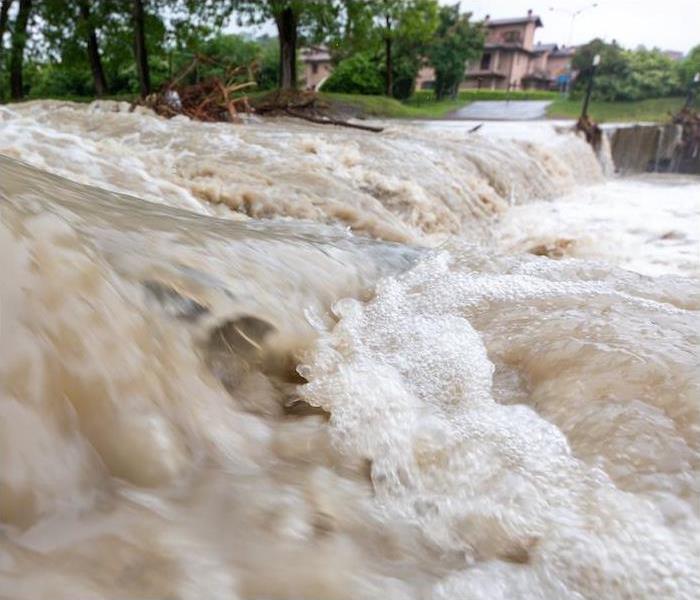 Flooding can happen in a flash. Call SERVPRO of Hyde Park/Central Austin to help clear any damage your home or business gets during a flood.
Flooding can happen in a flash. Call SERVPRO of Hyde Park/Central Austin to help clear any damage your home or business gets during a flood.
As we gladly say goodbye to the colder winter months and welcome spring and summer, it is important to make sure your home and family are prepared for any sort of flooding situation that occurs in the Austin area.
Did you know that Austin is in the heart of “Flash Flood Alley”? This makes our community uniquely at risk of suffering flash flooding conditions from April to September.
Read on below to learn some tips about how to prepare for a flood in your Hyde Park home.
Understanding Alerts
Like any other severe weather situation, flooding events range in severity. When a flood watch is issued, it is time to start preparing your home. That means conditions are favorable for a flood to occur. Flood advisories are issued when heavy rain or a storm is forecasted to cause some flooding concerns in the area.
If a flood warning or flash flood warning is issued, take action immediately. Stay off the roads and seek higher ground if possible. A flash flood could develop in minutes even if it is not actively raining where you are.
How to Prepare Your Home
If your home has a sump pump, make sure it is in good working condition and consider having it professionally inspected. The worst time to find out there is something wrong is when it’s too late!
You should also take the time to anchor your utilities and tanks to the ground. Make sure your propane tanks, electrical panels, and any outdoor appliances or equipment are secure in the event that fast-moving water makes its way onto your property.
You should also get your emergency kit ready to go. Restock medicine, first-aid materials, flashlights, batteries and food for every member of your family. Don’t forget to have a supply of fresh water to drink as well. During and after a flood, drinking water from your taps may be compromised for some time.
How SERVPRO Can Help
Flash flooding and just flooding in general can be unpredictable. If your home or business suffers from water damage or storm damage following a flooding event, call SERVPRO of Hyde Park/Central Austin immediately.
Our flood damage restoration team is highly trained in water removal and the drying process, and we will work hard to dry out your home as efficiently as possible. Once the affected areas are dry, we can work on your reconstruction to help you completely recover from your flood disaster.
Was your home affected by a flood? We are here to help 24/7 and can restore your home quickly.
5 Steps to Take After A Frozen Pipe Bursts in Your Home
12/8/2022 (Permalink)
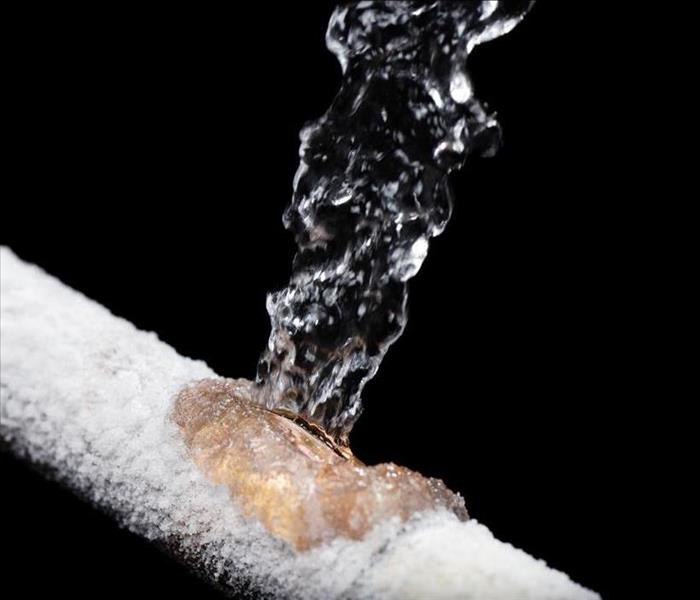 A frozen pipe bursting in your home is an unfortunate event and can cause a lot of damage.
A frozen pipe bursting in your home is an unfortunate event and can cause a lot of damage.
When your pipes burst, it's not the end of the world. But it can be scary and definitely something you should not try to fix on your own. If you're experiencing a burst pipe in your home or business, here are five steps to take after the pipe has been fixed:
Step 1: Shut off the water.
The first thing you should do when your pipe bursts is shut off the water supply to the affected area. This can be done by shutting off your main water valve or turning off any faucets within range of the burst pipe to stop it from leaking. If you are unable to turn off either of these items, call a professional immediately.
Step 2: Assess the situation.
The second thing you want to do is assess the damage.
- Find the source of your leak. In many cases, this may simply be a loose connection or cracked pipe that can be easily fixed with basic tools and supplies from your local hardware store. If it’s something more serious, though—like a broken valve or other internal system damage—you might need professional help for repair work.
- Check for any water damage that resulted from the burst pipe. This could include rugs and carpets soaked through; wood floors warped or buckled by excess moisture; paint blistered off walls due to frost formation; cabinets drenched in cold water from leaky pipes (if so, you might have some drywall repairs on your hands); hardwood floors stained by rust deposits left over from old metal pipes.
- Check for mold or mildew growth along walls where there were leaks near plumbing fixtures such as sinks or toilets; also look around corners where dampness tends accumulate most often after heavy rainstorms or snow melts. These areas may require additional cleaning before they can safely be occupied again.
Step 3: Call SERVPRO of Hyde Park/Central Austin.
Call a professional restoration company like SERVPRO of Hyde Park/Central Austin. You’ll want to call someone who has the experience and resources to help you deal with the extensive damage your home has suffered. A restoration company will be able to help with:
- Emergency Response
- Structural Drying
- Contents Cleaning and Decontamination
Step 4: Stop the spread.
Once the pipe has burst, stop the water from spreading. Use a wet/dry vacuum to remove excess water and towels or rags to soak up more of it. It's important to keep your pets and children away from the area while you're doing this—after all, they probably won't understand what happened and might think it's fun to play in your clean-up efforts!
Step 5: Wait for the professionals to arrive and restore.
Patience is a virtue. You will probably have to wait for your restoration company to arrive on the scene, wait for them to complete their work, and then wait yet again while they bill you. Your insurance company might take its time paying out (or maybe not) and making sure that there’s no fraud involved before they do so.
The rest of the repair process can be pretty straightforward: After your pipes are fixed, your insurance company should send an inspector out who will verify that all repairs were made correctly and up to code; if everything checks out okay, then you can relax knowing that there won't be any more issues with frozen pipes in your home!
As the temperatures begin to drop, it's important to take extra precautions to protect your pipes. Frozen pipes can burst, causing extensive water damage and a huge mess for you and your family. If you do experience a pipe bursting, SERVPRO of Hyde Park / Central Austin can help. We offer emergency services 24/7 so that we can be there when you need us most.
A frozen pipe bursting in your Hyde Park, TX home is an unfortunate event and can cause a lot of damage. The most important thing to do after the pipe bursts is to turn off the water. Then you will need to find out where all the water is going and how much damage has been done. Once that is complete you can call a company who specializes in frozen pipes burst repair to come out and fix things up!
How Do I Make a Water Damage Claim?
11/12/2022 (Permalink)
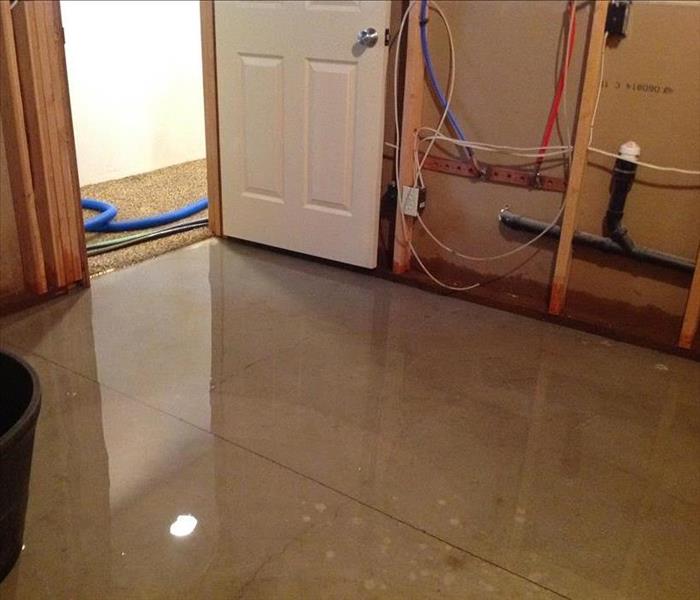 The first thing you should do if you have water damage is to contact your insurance company.
The first thing you should do if you have water damage is to contact your insurance company.
How to Make Sure Your Claim Is Processed Quickly?
Whether you’re a homeowner or renter, water damage can be a stressful experience. You may have experienced a flood as the result of a broken pipe or an overflowing sink or tub. In any case, your first priority is to minimize the damage and get things back in order as quickly as possible. And while insurance companies do offer expedited claims processes for certain types of disasters like flooding, they can still take several days or weeks to complete their investigation before issuing payment. If you need immediate help recovering from this type of emergency, here are some tips on how to make sure your claim is processed quickly.
The first thing you should do if you have water damage is to contact your insurance company. They’ll be able to tell you exactly what will be covered by your policy and how long it takes for a claim to go through.
1) Review Your Policy
Check your water damage coverage. First, check your policy to see if you have any water damage coverage. If not, consider purchasing an add-on rider for a few bucks more per month that will cover any damages caused by burst pipes or overflowing toilets (but not floods).
Next, determine whether or not you have a deductible and how much it is. A $500 deductible might seem reasonable if the cost of repairing your home's sewer line exceeds that amount; however, if you don't want to pay anything out of pocket for repairs—or are unable to do so—you may wish to purchase additional insurance from a third party at an added cost.
Lastly, take note of any time limits on filing claims under your policy before contacting them about their process (which we'll go into further detail about below).
2) Call Your Agent
If you have an insurance agent, call them immediately. They will be able to help you with the next steps and can get a claim started for you. If not, call your insurance company directly and ask if they have someone who can help with making a water damage claim.
3) Take photos
Take photos of the damaged item. If you have a camera, take some photos of your damaged item. If not, contact a professional photographer or get into contact with your insurance company and they may be able to help you out with this step. Be sure that the first few photos are of the undamaged area and then proceed onto taking more photos as needed (e.g., close-ups).
Take photos of the areas around damage location(s). In addition to taking pictures of your damaged property, it's also important that you take pictures of all surrounding areas where there isn't any visible damage so we can better assess how much coverage is needed for those areas as well!
4) Obtain a Professional Opinion
Obtain professional opinion. If you have a damaged home, it's best to get an estimate for repairs from a company like SERVPRO of Hyde Park/ Central Austin before making any claims. This will ensure that the damage is covered by your policy and that it's not something else that caused the water leak.
If you don't have coverage, purchase it. If you don't have home insurance and need to buy one after your water damage claim, be sure to do so as soon as possible so that there isn't any lapse in coverage while you wait for your new policy to begin (a period of time known as "the waiting period").
The process of making a water damage claim can be very simple, but it can also be complicated. Follow these steps and call SERVPRO to get your Austin, TX home back to normal as quickly as possible.
How Does Category 1 Water Damage Differ From Other Types?
7/30/2022 (Permalink)
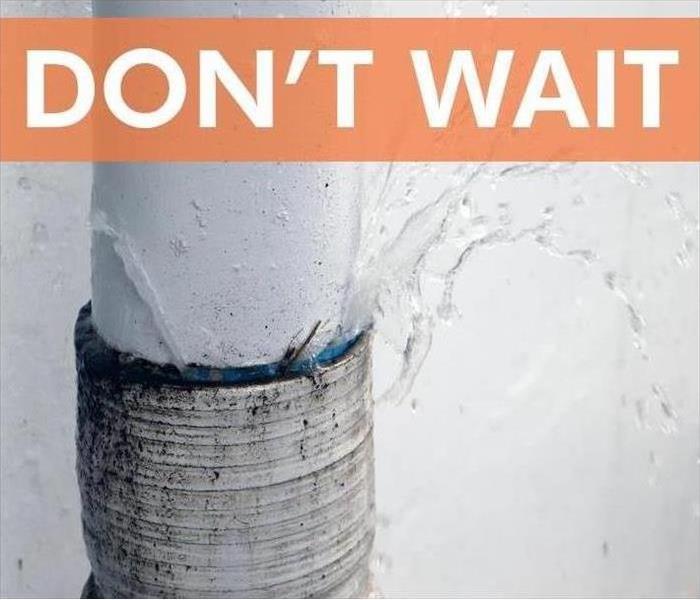 A leaking pipe will become a burst pipe causing flooding and three to five days of cleanup.
A leaking pipe will become a burst pipe causing flooding and three to five days of cleanup.
Category 1 Water Damage
When it comes to the different types of plumbing problems or water issues that could affect your building, a Category 1 incident is about the easiest to deal with. This comes from a clean water source such as a supply line or a broken pipe. It will not have contaminates that would be present in a toilet overflow or flooding from major storm systems in North Loop, TX.
Why is Category 1 Less Harmful?
A Category 1 leak or flood means that the main concern will be the water itself and any damage it could potentially do. You will not be dealing with black water and all of its bacteria and toxic content. While this makes dealing with the water a bit less stressful, it is no less urgent to remove the water and dry things out. In a short time, standing clean water can become contaminated and will begin to grow bacteria so it is essential to extract the water as soon as possible.
Why Can a Service Do Better Than you Can?
Your building is your moneymaker so it is important to get professional help to get it back on track as soon as possible. An experienced emergency water mitigation service will have powerful extraction systems; fans, blowers, and ozone machines were needed to remove water, dehumidify and remove odors and help prevent any mold spores from growing. A service will also be able to meet the demands of your insurance agent for proper restoration.
Are Harmful Chemicals Used to Clean Up After Category 1 Damage?
Since you are dealing with clean water, Category 1 water damage is a much easier clean-up. There is usually no need for industrial disinfectants and often, the contents and furnishings, and structural materials of the building can be dried and cleaned rather than scrapped and replaced following the water damage.
There is no need for you to worry when you are getting such good help from qualified service personnel and with minimal interruption, you will be back to business as usual.
3 Causes of Noisy Pipes in Your Home
5/20/2022 (Permalink)
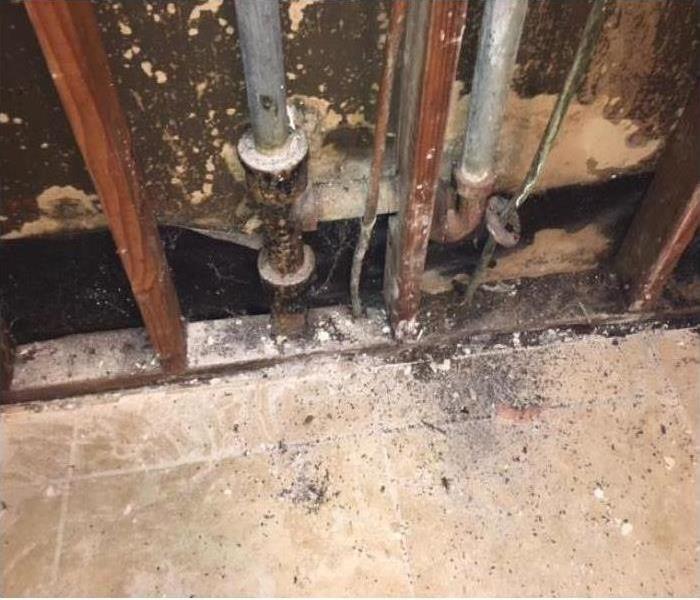 Hidden water damage in an Austin, TX home
Hidden water damage in an Austin, TX home
Three Reasons for Noisy Pipes in Your House
You may be accustomed to the many noises in your Austin, TX, home, such as the settling pops and crackles that occur in the fall or the sound of your HVAC system as it turns off and on, but did you know that noisy plumbing may be trying to tell you something? Loud plumbing is usually not considered normal and may indicate an imminent failure somewhere in your home, such as a pipe break. Learning to recognize different sounds your home's plumbing makes may help you head off flooding problems before they begin.
1. Pipe Banging or Chattering
Pipes that bang or chatter as water runs may indicate a loose pipe or that a section of exterior pipe is too close to the wall and making contact with it each time you turn on the water. While the vibrations are not harmful to the pipes on their own, they may weaken the section that hits the wall, causing an eventual pipe burst. You may want to consider changing or altering that section to reduce noise and damage to the plumbing.
2. Whistling May Warn of a Pipe Break
Faucets or toilets that whistle when turned on or when they are flushed may indicate a weak valve or an obstruction in one of the pipes. Whistling sounds that increase over time may be a warning that a pipe break is about to occur due to a clog, so turning off the water to that appliance and investigating the pipes can prevent this.
3. Squealing and Worn Valves
Not only are squealing pipes an annoyance but they could eventually harm your home's plumbing system over time. You can prevent this by dismantling the faucet and examining whether the rings and valves need replacing. If you believe the problem is a serious clog, you can call in a water restoration and mitigation company to remove it and fix broken pipe sections if necessary.
Noisy pipes in your Austin, TX, home are usually an annoyance that you may not always recognize as the symptom of a larger issue. You can prevent flooding and other problems by investigating these noises and their causes.
Common Questions After a Commercial Flood
3/14/2022 (Permalink)
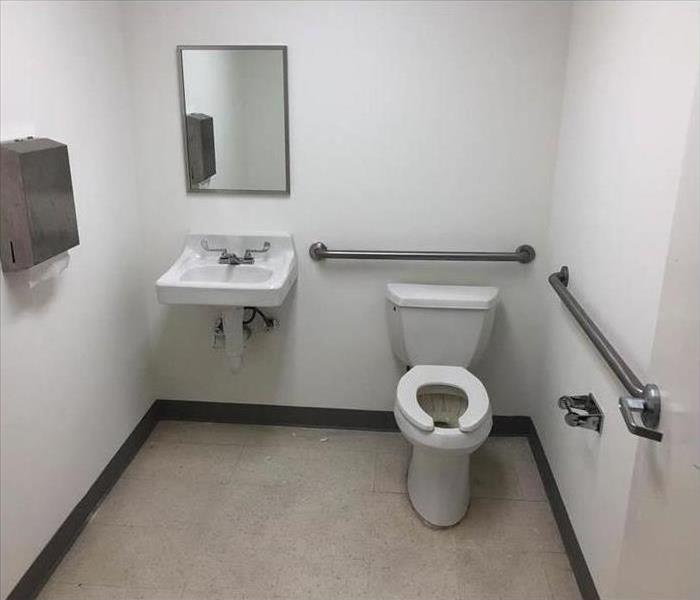 This commercial bathroom was restored after a sewage backup.
This commercial bathroom was restored after a sewage backup.
Frequently Asked Questions Following a Commercial Flood
No business wants to shut down services, even in the midst of a disaster, but sometimes, putting up with a temporary interruption is necessary for the health and safety of the workers and customers. For example, flood water from a sewage backup, like a toilet overflow, is not something you want employees or consumers treading through.
Instead, it is vital to close down the affected areas, if not the entire company, until a water damage restoration company in Hyde Park, TX, can assess the damage. There are at least questions most business owners will ask in this situation.
1. What Is Category 3 Water?
Category 3 water is also known as black water. It is highly toxic and should not come into contact with your skin or insides. The water typically stems from sewage backups when coming from internal sources and contains a mixture of bacteria, chemicals, and other hazardous materials.
2. How Do You Clean Up After a Water Disaster?
Cleaning up category 3 flood water is similar to cleaning up after any other water disaster, except there are more precautionary measures. A disaster response crew will first address any problems contributing to the overflow. Then, they will remove the excess water using pump trucks or other methods. Finally, they will dry, disinfect, and clean the area.
3. Is Restoration Possible?
While it is impossible to comment on the uniformity of restoration capabilities, many properties can be saved. Do not assume your commercial property isn’t fixable until a professional tells you it can’t be saved.
Flood water stemming from a sewage backup or toilet overflow is often classified as category 3, meaning it is hazardous. You should never attempt to clean a category 3 disaster on your own; instead, you should use experienced professionals, ensuring you, your workforce, and consumers remain safe and out of harm's way. While a water disaster can seem overwhelming and beyond repair, never give up until a professional says it’s time.
How To Restore Your Belongings After Water Damage
2/21/2022 (Permalink)
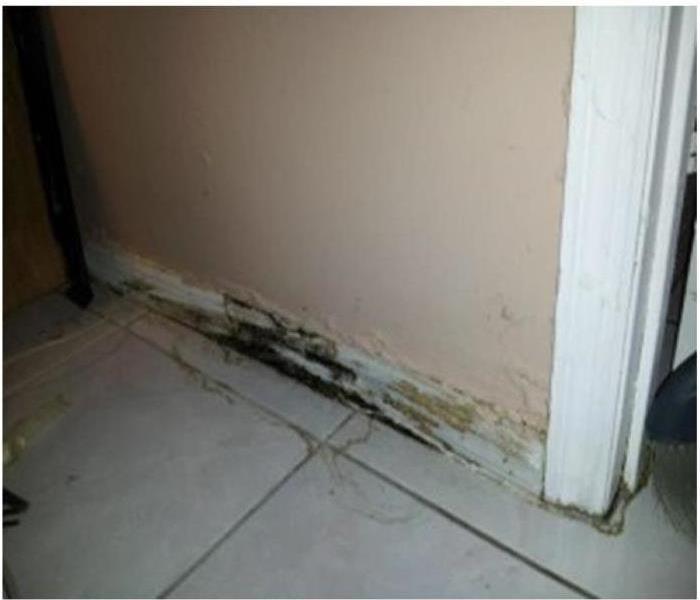 Standing water can lead to mold growth.
Standing water can lead to mold growth.
How To Restore Your Belongings After They Have Been Flooded
Water in home settings can be devastating, whether it comes from leaking pipes or backed-up drains or toilets. While there may be nothing you can do to prevent your items from becoming waterlogged in the event of an unexpected water leak, there are some things you can do to restore your belongings after water damage occurs. Here are a few ways you can clean up various items in your Campbell, CA, home.
1. Separate Items
Before you officially begin the cleanup process, separate your items into those that are porous and nonporous. Porous materials may include wood, paper, rugs and other types of fabric. Generally, these are more likely to harbor mold and bacteria from broken pipe water, so it’s important to clean them quickly. Nonporous items are usually much easier to clean since they don’t absorb water and are less likely to harbor bacteria and mold.
2. Dry-Clean Non-Porous Items
Dry cleaning may be appropriate when removing light water residue from non-porous items in your home. Items can also be dry cleaned before floor restoration professionals come in and thoroughly clean your items.
3. Air-Dry When Appropriate
If you’re not dealing with hazardous water, such as sewage, it may be appropriate to gently air-dry most of your belongings. If possible, do so indoors unless the weather outdoors is ideal. You can increase the airflow inside your home with the use of open windows, air conditioners and fans.
4. Toss Dangerous Items
Depending on the nature of floodwater in home settings, it may be dangerous to keep saturated items. If there is a high likelihood of the floodwater containing harmful bacteria, it may be best to throw away contaminated objects. In other cases, professionals may be able to safely clean and salvage some of your valuables.
While you may be able to clean some of your belongings that water has damaged in your home, safety should always be your top priority whether you’re dealing with a broken pipe or a sewer backup. For help with dry-cleaning or salvaging contaminated items, it’s best to wait for professional help to arrive.
OMG, There Is Water in the Light Fixture!
12/31/2021 (Permalink)
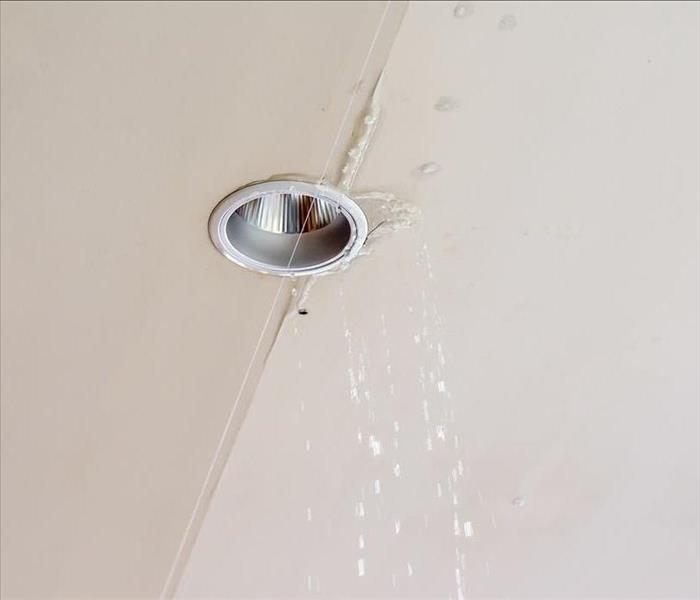 Water coming out of a light fixture.
Water coming out of a light fixture.
OMG, There Is Water in the Light Fixture!
The little water drops seem so gentle as they land on your shoulder, but these deceiving little guys have just dropped some big news on you. As you look up, you finally see what they were trying to tell you... there is water in the light fixture. Now you are in a heightened state of concern. Scratch that, you are in a full panic. You need to know what to do right now, so here is a quick look at important steps to take to protect your safety, prevent further damage, and restore your home in Bastrop, TX.
• Turn off the electricity at the power supply panel. Don't touch the light switch and don't touch any area in contact with water until you have shut the power off at your home's power supply panel.
• Turn off the water supply. Identify the source of the water and shut it off. If you are having difficulty finding the leak, you can always turn off the main water supply that comes into your home until the professionals come.
Now you have eliminated the immediate danger of electrical shock and have stopped the leak. The water in the light is still there, but you have a little more time to assess the damage for clean-up and repair.
Obviously, you have to replace a light fixture, but as you are looking up, you notice a sagging section from the ceiling. It's now clear that you have ceiling damage, too. Water damage requires special cleaning methods depending on the type of water that caused the damage: was it clean water from a pipe, "gray" water from a shower drain or washing machine, or "black" water from the toilet or a regional flood? Each type of water requires a different level of cleaning and restoration, but specialists can help do this in a comprehensive and safe way for your family.
Once the area has been restored back to normal, you can put in that new fixture (the one without water in the light) you really wanted to begin with.
Cleaning Up After a Broken Water Heater
11/23/2021 (Permalink)
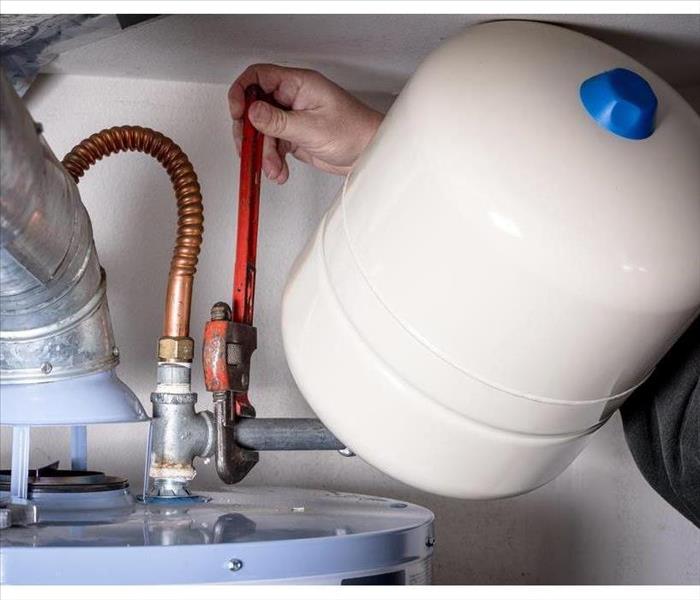 Broken water heaters lead to money spent on resolving the issue.
Broken water heaters lead to money spent on resolving the issue.
Cleaning Up After a Broken Water Heater
Broken water heaters lead to money spent on resolving the issue, but neglecting to resolve all issues stemming from a leaking water heater can quickly become costly. Left unsolved, water issues can evolve into appliance repairs, wall and flooring replacement and more. By following a few simple steps, you can ensure that you don’t have to pay thousands of dollars extra for your failed water heater.
1. Drying as Top Priority
If you are facing a broken water heater in Rosedale, TX your priority should be to clear out the water, then dry the affected areas. Clearing a mess from a damaged water heater can be made easier by using drain pipes and renting vacuum cleaners specially designed for water removal. You may also wish to consider renting an industrial fan to speed air flow through the affected space.
2. Cleaning Is Crucial
Water coming from a leaking water heater is usually classified by insurance specialists as Category 2 water; this kind of water is not terribly dangerous, but it can still cause health effects if the area is not cleaned. Be sure to sanitize the affected areas thoroughly to ensure that mold and other undesirables are not allowed to infect your home.
3. Calling a Professional
Finally, calling a reputable water removal professional can ease your mind and mitigate any lingering concerns. These professionals have the expertise to examine everywhere the leaked water could have affected – including underneath flooring and inside walls. So much potential damage from water issues occurs in invisible places, so it’s important to have a water removal specialist on-site.
If you’re dealing with a leaking water heater, just remember three simple steps: Dry it, clean it, and call a professional. By taking quick action to remediate water issues, you can resolve the problem without breaking the bank.
How To Protect Your Business From Water Damage
9/27/2021 (Permalink)
 Water damage resulting from both contaminated and clean water sources requires prompt action to prevent mold growth.
Water damage resulting from both contaminated and clean water sources requires prompt action to prevent mold growth.
Every business in Hyde Park, TX, is susceptible to water damage. While clean water leaks are usually manageable, flooding and broken pipes can cause significant destruction and interrupt normal business operations. To prepare for potential problems, every business owner should understand common sources of water damage and how to minimize their risk.
Sources of Water Damage
Water damage can originate from clean water sources, such as broken pipes and leaking water supply lines, as well as grey and black water. Examples of greywater sources include sump pump backups and overflowing dishwashers, washing machines, and unsoiled toilet bowls. Blackwater carries harmful bacteria and is unsanitary. Sewage backups and flooded lakes and rivers are examples of black water sources.
Protecting Water Pipes
During the winter, your building’s pipes are susceptible to freezing and bursting. To minimize your risk of a broken pipe, take the following actions:
• Insulate pipes located near external walls with rubber or fiberglass sleeves
• Drain pipes that will not be utilized during the season
• Maintain the minimum temperature of 40? throughout the building
• Check antifreeze levels in anti-freeze sprinkler system
Minimize Risk of Clogged Pipes
Clogged pipes can result in black and grey water overflows. To safeguard your building from this destruction, take the following precautions:
• Ensure no one flushes paper towels or feminine hygiene products
• Avoid planting trees and shrubs near water and sewer lines to prevent root intrusion
• Refrain from pouring grease down any onsite kitchen sinks
Clogs can also occur in your sprinkler or HVAC system. To prevent this, you should complete routine maintenance on this equipment to ensure there are no obstructions or other issues that could result in water leakage.
The Cleanup Process
Water damage resulting from both contaminated and clean water sources requires prompt action to prevent mold growth. This includes removing saturated materials and drying the water-damaged space. If grey or black water is involved, you must also thoroughly disinfect the affected area to eliminate potentially harmful bacteria. A cleanup and restoration expert can help you accomplish this daunting task, allowing you to focus on business operations instead of the restoration process.
3 Ways Water Might Make Its Way Into Your Basement
6/24/2021 (Permalink)
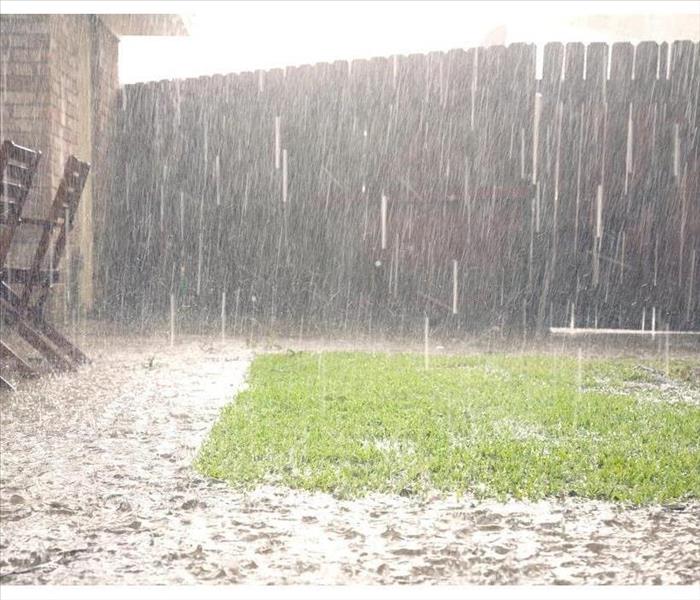 Rain usually flows into the ground and leaves your home unaffected by a basement flood.
Rain usually flows into the ground and leaves your home unaffected by a basement flood.
3 Ways Water Might Make Its Way Into Your Basement
Flooding can affect your Bastrop, TX, home for a wide range of reasons. Whether it's a busted pipe or an act of nature, you need to turn to a residential water cleanup professional to ensure the deluge is properly taken care of. When it comes to your basement, high waters can end up in this space in a variety of ways, including the following:
1. Heavy Rains: Rain usually flows into the ground and leaves your home unaffected by a basement flood. However, when the rain is heavy, it may affect the level of the water table. A higher water table can leave the liquid with little places to go besides into your home. Sometimes the fluctuation in the table can even affect the sewage system and cause a sewer backup in your house.
2. Frozen Pipes: The plumbing in your home could be another culprit for this type of flooding. If your basement is not properly heated during the winter, this space could be at a higher risk for frozen pipes. When the interior temperature drops too low, the liquid flowing in the plumbing starts to freeze and expand. This expansion can cause cracks to form. Once the water thaws, it may start to leak into your living space.
3. Leaking Pipes: Cold weather is not the only cause of a broken pipe. Leaks and other breaks can still cause a deluge of water without the sub-zero temperatures. If you ignore the need for a pipe repair, you may end up having to deal with a flood in your basement. Even if the leaking pipe is located on the top floor of your house, the water can travel through the walls and floors to find its way to the lowest point of your living space.
Understanding the reason behind flooding can make it easier for you to create a cleanup plan. It's important to remember that your water problems could be caused by a unique situation.
Water Damage May Lead to Secondary Damage
3/16/2021 (Permalink)
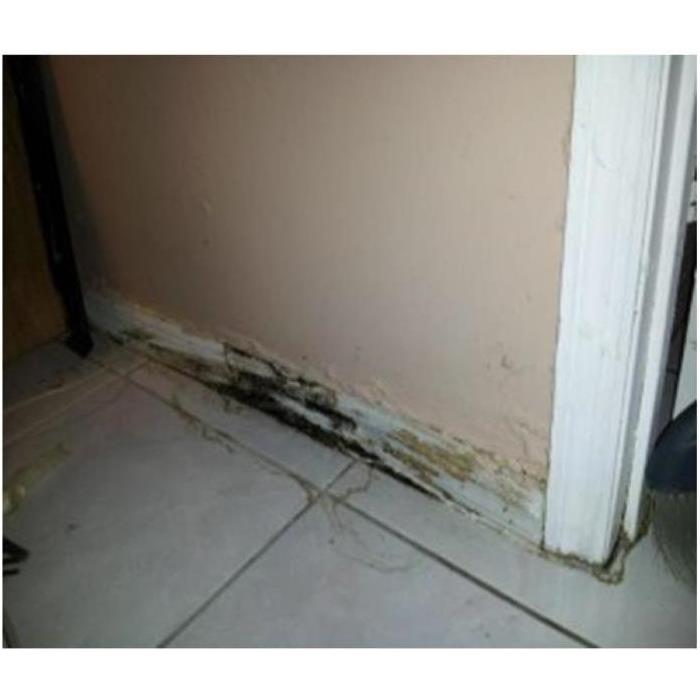 Water and mold damage in a Hyde Park, TX home.
Water and mold damage in a Hyde Park, TX home.
Water and Mold Damage
Whether from a slow leak, pipe burst or flood, unwanted water in your Hyde Park, TX, home can be overwhelming. Along with worrying about cleaning up and salvaging belongings, secondary damage becomes a concern. The longer water sits, the more it leads to additional headaches, such as black mold.
Beyond Visible Damage
While standing water is a clearly visible sign of trouble, water issues often have a way of sneaking up on you. If the problem has been hidden for a while, there is a good chance that the damage has spread and taken on new forms. Even a small leak may present more problems than it may seem. When it comes to water damage, evaporation and high humidity are two components that pave the way for additional damage. If the initial damage isn’t properly addressed, those two culprits lead to:
- Black mold growth
- Cracked plaster or sheetrock
- Walls, floors and ceilings warping
- Water stains
Prevention Tips
Since moisture in the air may quickly start to condense throughout a home, materials that weren’t even near the source of the original problem can become wet. Once high humidity is factored in, getting everything dried out becomes much more difficult. Taking fast action is key to avoiding growing damage. Along with calling a water and mold damage restoration professional, who will have the expertise and commercial-grade tools to properly restore your home, it’s vital to take a few initial steps to start the drying process:
- Extract any standing water.
- Ventilate the area to increase airflow.
- Open any drawers and cupboards.
- Remove any saturated textiles, such as rugs and curtains.
- If furniture can’t be moved, raise it from the floor to avoid water wicking up.
Water damage doesn’t have to mean dealing with black mold. Immediately addressing water issues and taking steps to dry out the home can reduce the chances of additional damage.
How To Avoid Spending Money on Water Damage Repairs
2/17/2021 (Permalink)
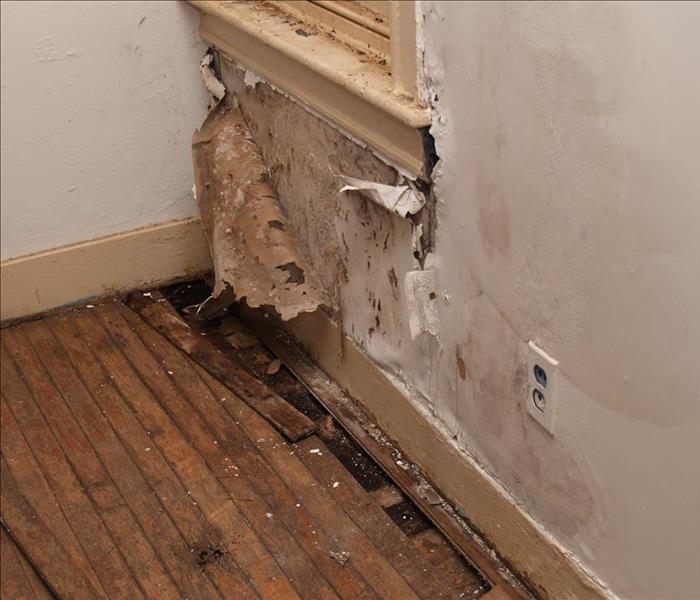 Water damage in Cedar Creek, TX.
Water damage in Cedar Creek, TX.
How To Avoid Spending Money on Water Damage Repairs
While insurance can help you pay for emergency restoration services, you probably want to avoid making a business claim entirely. Unfortunately, there are lots of disasters that could force you to contact your insurer.
Freezing and water damage is the second most common cause of small business insurance claims. This category encompasses many types of losses, including:
- Corrosion
- Warped floors or walls
- Destroyed carpets or inventory
- Structural harm
- Mold growth
A typical water or freezing claim costs $17,000. Some disasters, including floods and mold growth, are typically excluded from commercial policies. However, you can add endorsements to provide further coverage. Here are some other ways to avoid spending your company's hard-earned money on water damage repairs.
Plan Ahead
First, you should develop a disaster plan. This should include purchasing the proper insurance. Keeping your policy up-to-date and buying endorsements can limit the out-of-pocket expenses that your Cedar Creek, TX, company incurs following an emergency. Do not wait until you have to file a business claim to check that you have sufficient coverage.
Your plan should also detail the resources you will have available along with processes for minimizing and assessing the damage following the disaster. Be sure to include a strategy for keeping your company operational following the water loss, as well.
Prevent Water and Freezing Damage
Of course, the best way to limit how much you spend on emergency repairs is to prevent water disasters entirely. There are several ways to do this. Start by sealing any gaps or cracks in the foundation. This should prevent water from leaking into the building during a rainstorm. You should also clean the downspouts and gutters regularly.
A frozen pipe break can cause significant harm, as well. You should thus insulate the pipes and keep the premises' temperature above 55 degrees Fahrenheit.
A business claim should help you pay for repairs following a water loss. Since these repairs can be costly, you should maintain your policy and prevent excess water from entering your premises.
What You Need To Know About Water Damage
1/11/2021 (Permalink)
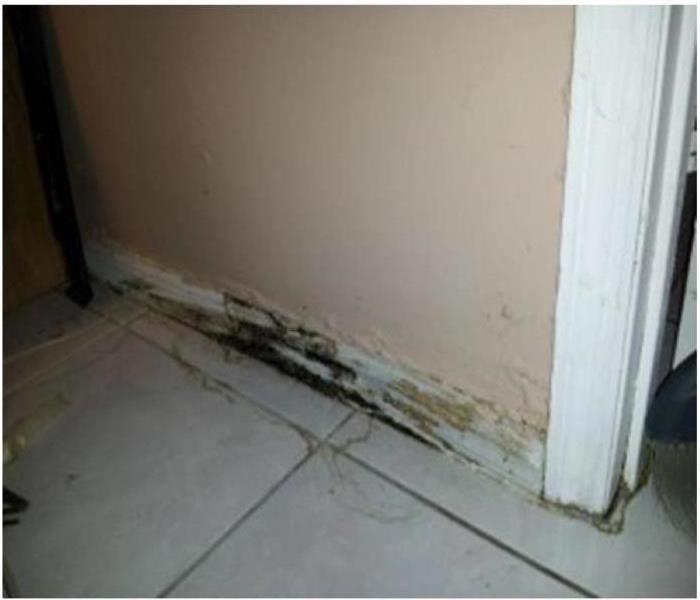 Water damage in Austin, TX
Water damage in Austin, TX
Stay Prepared In Case Of An Emergency
Water damage in Austin, TX, can cause many issues for your home. Although some water damage can sometimes be avoided, things like a pipe burst or natural disaster can cause unavoidable damage. It's important to act quickly and know how to deal with water damage so that you can begin the restoration process as soon as possible. Water damage is a homeowner's worst nightmare, but referring to this quick guide about water damage can help you stay prepared in case of an emergency.
Why It Happens
In order to understand how to deal with water damage, it's important to know how it happens. Water damage can occur for a number of reasons or situations. Some common causes of water damage include:
- A plumbing issue such as a pipe burst
- Basement or attic water collection
- Natural disasters, such as floods
- Dishwasher or other appliance issues
In order to deal with water damage, you must first understand where it is coming from. Identifying the source of the issue will help you determine the next steps.
Clean-Up Process
Cleaning up after water damage caused by flooding or other issue will depend on the issue and the level of severity. You can begin by removing any damaged belongings, such as household items or furniture, and leaving it out to dry. However, things like building materials may take more restoration than this.
As you begin to clean up damage, consider calling a water restoration company to help you assess damages and start the restoration process.
Beginning Restoration
If you have significant damage, there will be a longer restoration process. A professional water restoration company will bring specialized equipment to help you dry out your home and avoid mold growth. Building materials such as drywall or carpets may need to be replaced or restored. You should also document all damages for insurance purposes during this time.
Although water damage from a water line, pipe burst, or other issues can be a hassle, having basic information about it will help you act quickly to avoid any lasting issues.
3 Sources of Bathroom Leaks
11/30/2020 (Permalink)
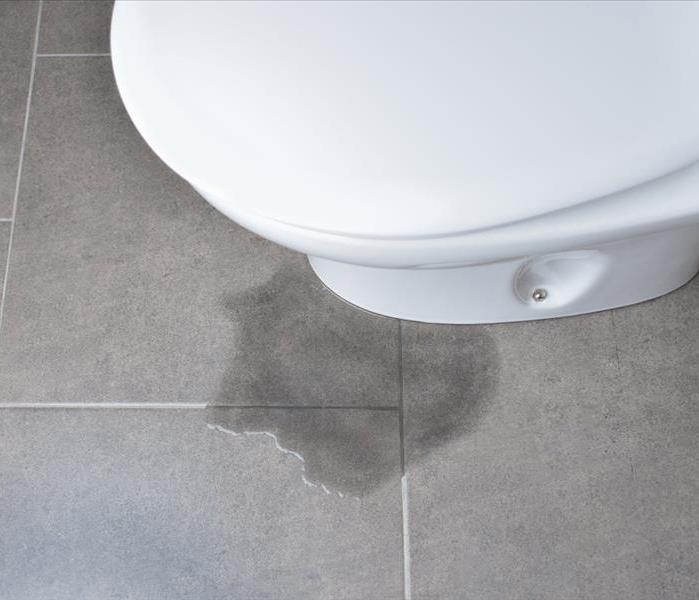 Leaking toilet in Tarrytown, TX
Leaking toilet in Tarrytown, TX
3 Sources of Bathroom Leaks
Does your home in Tarrytown, TX, have a leaking bathroom fixture? There are several common pieces of plumbing hardware that commonly wear out over time and cause a bathroom leak.
1. The Toilet
The most common issue usually occurs when the toilet begins to leak after being flushed. In this case, the leaking toilet means that a watertight seal has begun to fail. Another common cause of leaks is a faulty float. This component tells the toilet when to stop filling with water. Either of these issues need to be addressed promptly, and they require substantial time and effort. Thus, it's best to leave the job to a professional, specifically one who is experienced in plumbing inspection and water cleanup.
2. The Sink Faucet
This one is a classic: the ever-present drip, drip of a leaking sink faucet. Sometimes the issue is an old, worn-out rubber washer. Other times, a component called the cartridge must be replaced; most modern sinks use cartridges, but, if your sink is older, it might not have one of these. Lastly, if you find that the dripping is only at certain times of the day, it's most likely a water pressure issue.
3. The Shower Head
Like a sink, there are several issues that can cause a leaking shower head. The threads can be worn from time, improper installation, or the rubber gasket can be damaged or torn. These issues also apply to handheld showerheads. While this one is about as easy to identify as a leaking toilet, it's still best to leave the tedious repair to a professional — especially if you are inexperienced with plumbing.
A leaking toilet or other fixture is something that needs to be addressed promptly by a professional. Left to deteriorate, the materials responsible for the leaks will become more worn, leading to further leaks and the threat of water damage.
4 Steps for Drying a Flooded Basement
10/8/2020 (Permalink)
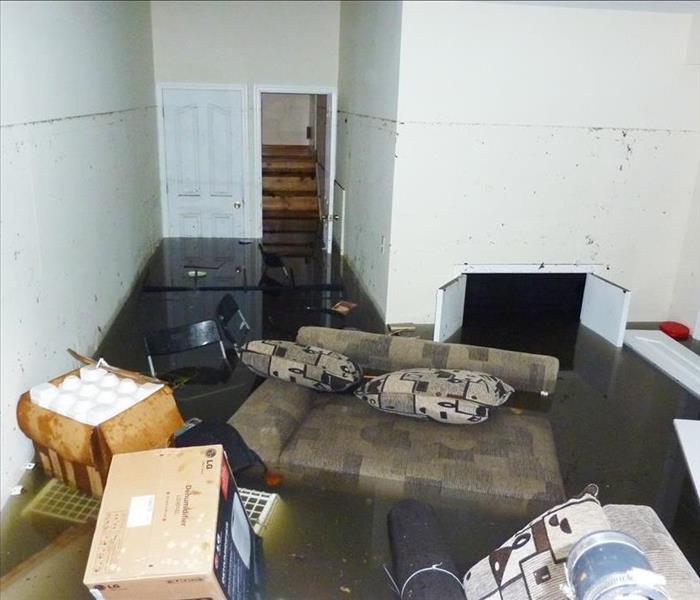 Flooded basement in Austin, TX
Flooded basement in Austin, TX
Ways To Remove Water From Your Basement
No one thinks about how to handle water in their basement until they have to. By following these four steps, you can drain your way out a basement flood.
1. Call Your Agent To Check Coverage
Insurance coverage can be a little murky when it comes to a flooded basement. Your ability to file a claim is dependent on how your basement became flooded. If pipes burst, that is considered an immediate accident and will most likely be covered. However, if you ignore a leaky pipe and sustain gradual water damage, you might be paying that repair bill on your own.
2. Find the Source but Stay Out of the Water
Try to find where the water is coming from. Decide if there is a safe way for you to stop flooding via a shutoff valve or other means. Above all, never wade into any water in your basement. You do not know what else is in it. It is also possible that any electronics or wiring have been compromised and you could be electrocuted.
3. Get All of the Water Out
For a substantial amount of water, rent a water pump or call a professional to have it taken out. Once you have the majority of the water removed, you can finish up any remaining spots with a wet/dry vacuum.
4. Have a Professional Inspect for Damage
The general rule for a basement flood is to remove or replace any material that has soaked up water. Wood and drywall are absorbent, so if they get wet and stay moist, they will promote mold growth. It is best to call in a water damage specialist to make an assessment of the resulting damage to see what needs to be done.
Dealing with a basement flood is a real headache, but by knowing you’re covered and who to call in Austin,TX, you won’t have to wade through the problem alone.
What Is Category 3 Water Damage?
9/2/2020 (Permalink)
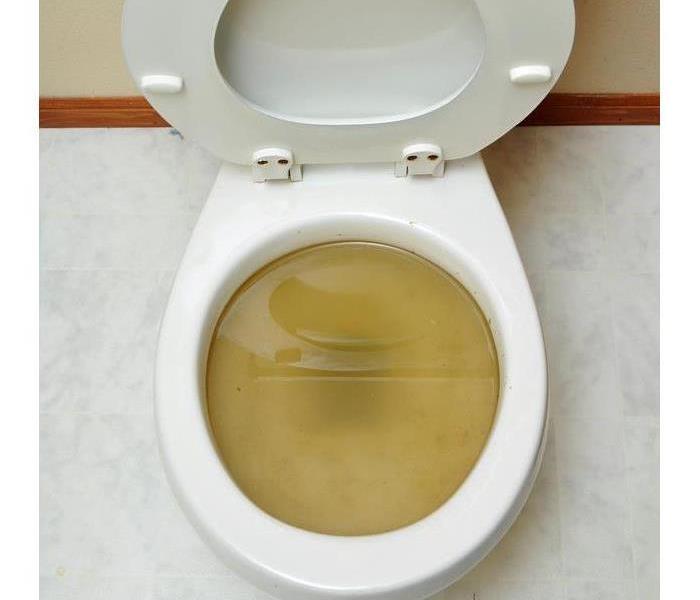 This type of flooding often results from a toilet overflow
This type of flooding often results from a toilet overflow
Flooding in general can bring massive damage to your personal property. However, not all floods were created equally and each different type must be remediated in its own specific way. Read on to learn how you can protect your home in Rosedale, TX, from Category 3 flood water.
Types of Flooding
There are three primary types of flooding. They are categorized by the type of contaminants present in the floodwater itself.
Category 1: This type of flooding is the least dangerous. It is categorized by a complete lack of contaminants or biohazards. In theory, humans and animals can safely consume it. That being said, you should still never attempt to drink this water. It can evolve into a more dangerous type of water if it comes into contact with outside contaminants.
Category 2: This type of flooding is typically a result of an overflowing household appliance, such as a dishwasher or laundry machine. While the water isn't necessarily completely clean, it's also not nearly as lethal as Category 3 water.
Category 3: Category 3 water, also known as blackwater, is the most dangerous type of flooding. It contains numerous biohazards and other lethal contaminants, such as raw sewage and human feces. This type of flooding often results from a toilet overflow or sewage backup. It is extremely dangerous, so you should never attempt to remediate the issue yourself. Instead, call remediation experts.
Preventing Category 3 Flooding
Category 3 flooding is extremely dangerous and you should never attempt to resolve the issue yourself. Because of this, your best course of action is to prevent the flood from happening in the first place. Regularly have sewer lines inspected. Keep your toilets clean and free of clogs. Never attempt to flush anything larger than your pipes can handle.
Category 3 flood water is a big problem for homeowners. It's scarier than other types of flooding because the typical homeowner is so powerless to resolve the situation on their own. Luckily, you always have the option to consult flood remediation experts for help.
Why Toilets Overflow During a Shower
6/1/2020 (Permalink)
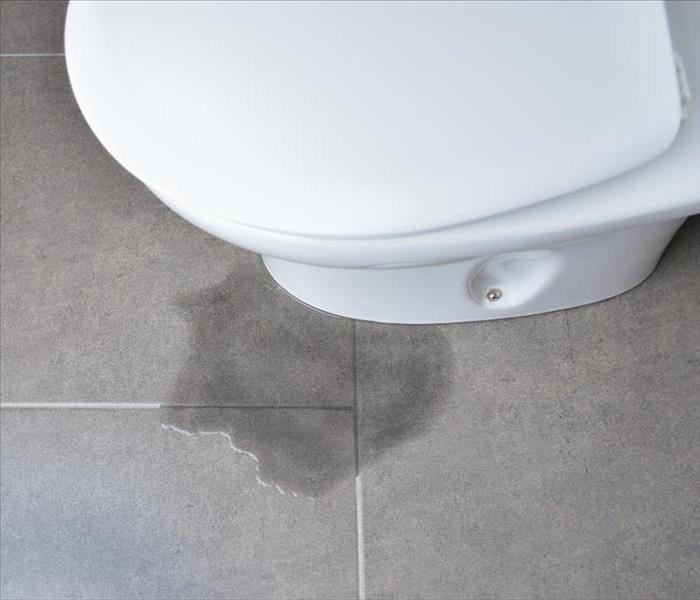 Toilet overflow in an Austin, TX home
Toilet overflow in an Austin, TX home
A shower should be a time for relaxation. Unfortunately, the simple act of turning on a shower can have negative consequences if a residence is suffering from clogged pipes: Some people in this situation end up with nasty toilet overflow.
These backups are odorous and may damage a home's floors and walls. Routine overflows are not a sustainable situation and repairs are necessary to get a bathroom in working order.
Clean Pipes With Care
Water that travels down a shower drain enters the waste lines. If there is a blockage, then pressure backs up and releases through the first place it can, which is a toilet. SERVPRO crews are Faster to Any Size Disaster. They can locate the source of a pipe clog and restore any damage. They typically use a variety of specialized tools and products for sewage cleaning:
Snake: This accessory is also known as an auger. It is made to navigate the inside of a pipe to remove obstructions. It’s typically made from metal and about 25 feet long.
Enzyme Waste Removal Cleaner: A version of this product is available at home improvement stores. The professional formula is generally better at breaking down organic material.
Chemical Drain Cleaner: This cleaner may be corrosive to pipes and toxic to people or pets. Care should be used when considering it as an alternative to enzyme waste removal products.
Rely on Professionals
Restoration experts prepare the bathroom floor in case there's a surprise overflow — sewage cleaning can be a messy process. Most homeowners also lack the expertise and tools to complete a repair job, in addition to the obvious downside of working with sewage and other wastewater.
Austin, TX, has professionals standing by who can help. They are skilled in residential water repair and can tackle even the most stubborn pipe clogs.
Everyone should be able to take a shower in peace. The experts know how to approach sewage cleaning in order to get a bathroom back to top condition fast.
Austin Area Water Damage Company Resolves Water Damage Issues
5/22/2020 (Permalink)
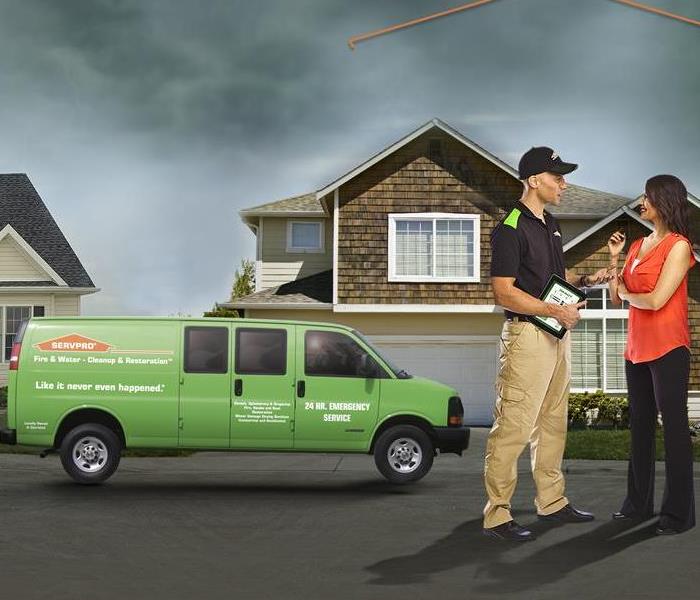 Here to Help
Here to Help
Summary: SERVPRO of Lakeway/West Lake serves the greater Austin, TX area with highly trained, well-equipped water damage specialists.
For most people, the largest lifetime purchase is a home. All disasters cannot be prevented, but attention to detail may serve to minimize the damage, as the following scenario illustrates.
The homeowner, Chris, performed his due diligence when it came to chores around the house and home maintenance. From the manicured lawn to the sculpted shrubs to the neatly outlined flower beds, the yard was immaculate. Chris made sure to clean out the gutters, pressure wash the driveway, and repaint the fencing and latticework in the flower gardens.
Inside the home, Chris was just as diligent. He inspected the supply lines to the washing machine, tightened the vent connection to the clothes dryer, and repaired any leaking faucets. Several years earlier, his dishwasher had overflowed, causing extensive water damage, so he was wary of potential water leaks.
Chris gave particular attention to the HVAC system since he knew that the Texas heat can cause a well-maintained system to produce up to twenty gallons of water a day. Like clockwork, he changed the filters monthly so that they would not clog and waste energy.
The annual accumulation of mold, algae, and mildew on the coils and in the drip pan concerned Chris. Every year, he would clean the coils with coil cleaner and pour bleach into the drip pan and down the drainpipe. When he finished, the system looked clean and worked well.
Telltale Signs of a Leak
In late August, Chris and his family noticed a musty smell in the house, especially after they had been away for a week’s vacation. Also, there was streaking and sagging in the kitchen and on the hallway ceiling leading to the back door. The sheetrock in the hallway felt damp and soft in places, and the baseboards and flooring were moist and warping. Water was leaking from somewhere. The source had to be found and stopped quickly before any more damage could occur.
Since the visible water damage involved several rooms, Chris called a local water damage specialist for assistance. An emergency call brought a highly-trained, well-equipped professional to the scene. Relying on advanced technology and years of experience, the technician traced the leak to the HVAC system. However, a visual inspection of the coils, drip pan, and drainpipe turned up nothing at the unit other than a small amount of moisture around the unit’s base. The water damage specialist urged Chris to consult an HVAC technician.
The Problem Solved
The HVAC technician asked a few questions and arrived at the answer. Chris had been using bleach and other chemicals to clean the drip pan, drain pipe, and coils. While he meant well, the chemicals had damaged the drain pan in areas that the average homeowner would not be able to see without dismantling part of the HVAC system. The bleach had degraded the ABS pipe and PVC drainpipe, which resulted in a cascade of leaks. It had been several years since a trained and experienced HVAC specialist had inspected the unit, even though Chris had been performing regular maintenance.
Solutions that Work
The HVAC specialist was able to install a makeshift solution to handle the moisture from the unit so the water damage specialists could begin the restoration process. The series of small leaks had added up to a large problem. The condensate drain system needed repairs, and continuous moisture created an environment that fostered mold growth. Insulation needed to be replaced. Sheetrock, baseboards, and flooring needed repair, restoration, or replacement. The project required many hands, much equipment, and great expense.
The SERVPRO Water Damage Solution
The core of the SERVPRO service palate is water damage restoration. Every water damage situation is different and requires a unique solution, but the general process stays the same. The steps listed below illustrate the process for the typical water damage emergency.
Step 1: Emergency Contact
Step 2: Inspection and Damage Assessment
Step 3: Water Removal/Water Extraction
Step 4: Drying and Dehumidification
Step 5: Cleaning and Repair
Step 6: Restoration
The SERVPRO professionals can handle the entire water damage restoration process.
Conclusion
The SERVPRO team of Lakeway/West Lake is proud to serve local communities, including Austin, Lakeway, West Lake Hills, and Rollingwood. Emergency 24-hour service means the team is “faster to any size disaster.” Using advanced technology and the latest equipment, the highly-trained and certified professionals can handle any size job. Providing water, fire, storm, mold, commercial, biohazard, and special cleaning, the SERVPRO team of Lakeway/West Lake is ready to serve like pros.
For more information about water damage restoration and other services, visit the SERVPRO of Lakeway/West Lake website at https://www.SERVPROlakewaywestlake.com. To speak with a local SERVPRO representative, call (512) 261-4790.
Irrigation Maintenance Tips for Your Property
5/13/2020 (Permalink)
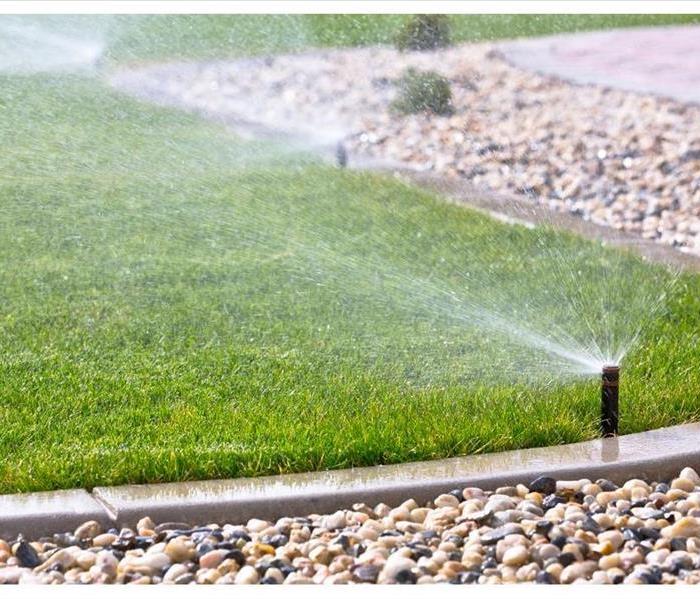 You should perform some routine irrigation maintenance
You should perform some routine irrigation maintenance
Winter is finally over, and warmer weather is just around the corner. As you prepare to turn on the underground sprinkling system at your commercial property in North Loop, TX, there are some important irrigation maintenance steps you need to follow before you flip the switch.
What To Check Before Turning On Your Sprinkler System
Slowly open the water valves. If they are opened too quickly, you can damage the valves by pushing too much pressure into each hose. The valves should be opened to the parallel position.
Check the sprinklers at each station. Look for low water pressure or water that is spraying wildly. Get those issues resolved before you begin to use the water system. The problem may be as easy as a damaged sprinkler head or as serious as a cracked pipeline. If you can’t solve the problem easily, call a professional to inspect the system.
After you are confident the sprinklers are running smoothly, reset the timers. It’s a good idea to reset them for a time when you will be onsite to ensure they don’t malfunction.
Clean dirt and debris off the weather sensors to ensure they work as expected.
How To Perform Routine Maintenance
Even after you have inspected your system at the start of the season, you should perform some routine irrigation maintenance. Sprinkler heads can be damaged by lawn mowers or foot traffic. Inspect them for cracks or other damage that can cause them to malfunction, and replace as necessary. Clean out the sprinkler nozzles to make sure they don’t become plugged with dirt or grass clippings. Water can get backed up in the system if the flow is blocked, which can cause serious sprinkler flooding.
After a long winter, you look forward to plush, green grass covering your commercial property once again. Following these smart irrigation maintenance tips will help to make that happen.
Restoring Your Home After Flood Damage
2/19/2020 (Permalink)
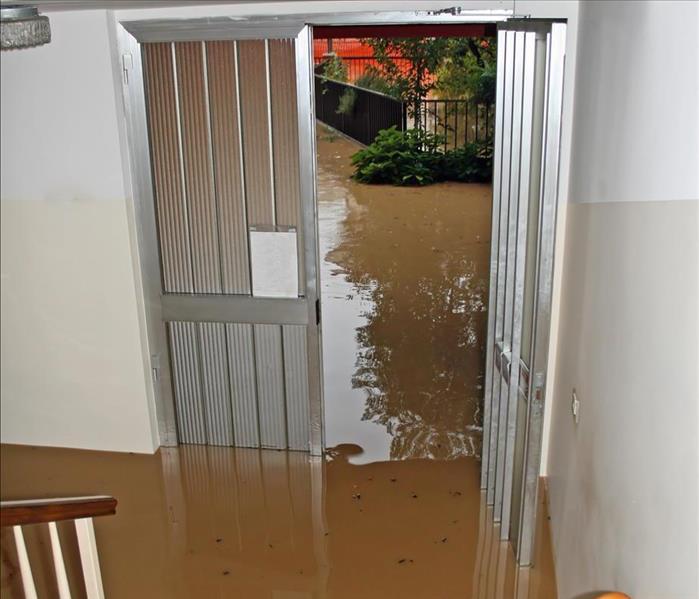 A flooded home in Bastrop, TX
A flooded home in Bastrop, TX
The number of extreme storms has been trending upward in the last decade, which means homes are at increased risk of damage from flooding. If your Bastrop, TX, home has sustained flood-related damage, you are undoubtedly concerned about what cleanup and restoration will look like. Consulting a water remediation specialist is the first step in the restoration process.
Why Expert Assistance?
Floodwater is highly toxic and should not be contacted without protective gear. Water contamination is categorized using three levels. Floodwater is termed black water, or Category 3, the highest level of contamination. Floodwater, like sewage cleanup, requires fast action by restoration specialists. Here’s why:
- Floodwater may be contaminated with toxic chemicals, sewage or other hazardous materials.
- Serious contamination can easily be missed by an inexperienced eye.
- Flood cleanup requires specialized safety and ventilation procedures, which are part of professional restoration protocols.
- Water remediation professionals move quickly, minimizing the chances of secondary damage that may develop as time progresses.
If you are going to be turning over your home to restoration crews, it may help to have an idea of what to expect from the cleanup process for black water damage.
What Happens During Cleanup?
Once the floodwater has been removed, teams will begin setting up elaborate ventilation systems and removing wet items. Wet structural elements, such as drywall, may need to be replaced. Depending on the damage, you may need to be out of your home until safety and toxicity are addressed.
Restoration teams will professionally clean carpets, upholstery and other porous items, if possible. Electronics, such as computers and televisions, will be dried and restored using specialized dehumidifying processes.
Photos, documents and other paper-based products will be handled immediately as they deteriorate quickly when damaged by black water. The items will pass through a series of drying methods and then will be sanitized and pressed. Professional restoration services usually include HIPAA-certified staff to protect the confidentiality of your documents.
Dealing with Category 3 water damage can feel daunting for a homeowner. A professional water restoration service can provide timely, safe cleanup procedures with the goal of returning your home to normal as soon as possible.
How To Lower Your Business Interruption Claim
1/29/2020 (Permalink)
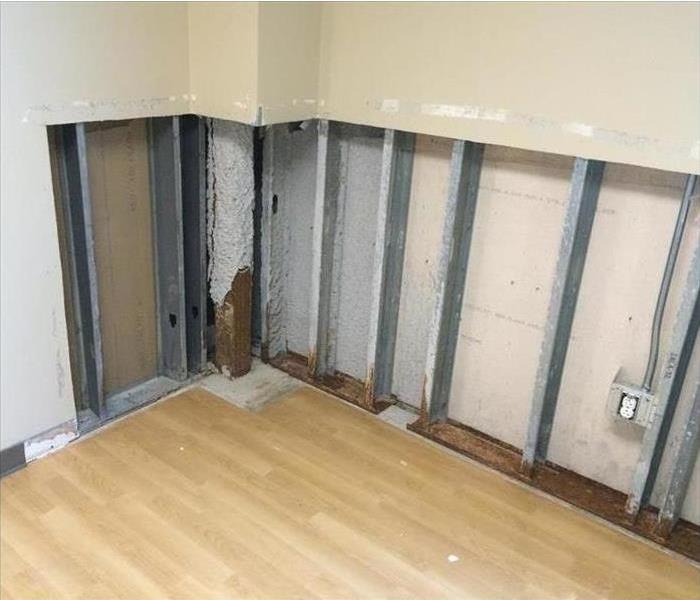 Commercial mold growth due to water damage in Austin, TX
Commercial mold growth due to water damage in Austin, TX
Here Are Some Tips on Lowering Your Claim
Good insurance coverage for your commercial property in Austin, TX, is an essential business expense. If flooding or some other disaster destroys your building, you may need to lean on your business interruption policy to stay afloat. You can probably keep your premiums lower, however, if you don't make large claims. Here are some tips on lowering your claim.
Quick Response
The first thing you need to do when you discover that a broken pipe has flooded a large portion of your work space is call water restoration experts. Technicians can often arrive within a few hours to start the steps of the remediation process:
- Assessment
- Extraction
- Drying
- Cleanup
- Restoration
You may not be able to avoid an interruption to your business. Your quick response, however, can lower costs by getting the cleanup started sooner. A faster restoration can also help you avoid secondary damage such as mold that often happens when large water damage is left too long.
Interruption Plan
Having a plan for what you will do if your building is damaged by flooding can help you minimize costs. Have a contingency plan in place and streamline the transition to it. For example, if you can figure out a feasible way to let employees temporarily work from home, that can help you avoid the cost of relocation while your building is being restored. Keeping the basics of your business operational can help you continue to bring in money, thus lowering the portion of the insurance claim that covers lost revenue. It can also help you remain competitive in your field if you don't have to shut your business down completely during remediation.
Preparation and action are the keys to lowering your business interruption claim. Even if your building is compromised by flooding, you may still be able to continue the work you do if you have a flexible plan. Quick and thorough remediation help you return to business as usual as soon as possible.
Will Insurance Cover Home Water Damage?
12/12/2019 (Permalink)
 Your homeowner’s policy will generally cover your damage as long as it isn’t due to floodwaters entering your home at ground level
Your homeowner’s policy will generally cover your damage as long as it isn’t due to floodwaters entering your home at ground level
Will Insurance Cover Home Water Damage?
When you experience a home flood, your life changes for a while as you focus on the cleanup. At some point, you will want to confirm whether or not your insurance will cover your damage. This discussion may give you an idea of what to expect. Home water damage is divided into two types of insurance coverage, depending on the origin of the water. You will file an insurance claim with your homeowner’s insurance for certain types of water-related damage but not floodwater damage. If rising floodwaters caused your damage, you would need a different type of policy.
Homeowner’s Insurance Coverage
Your homeowner’s policy will generally cover your damage as long as it isn’t due to floodwaters entering your home at ground level. These are circumstances that would qualify for basic homeowner's coverage:
- Leaking appliances, such as refrigerators or washing machines
- Stormwater leaking through the roof or siding
- Water from heavy rain or snow entering a broken window or skylight
- Overflowing toilet or bathtub
- Broken pipe
It’s important to ask your agent about policy deductibles and limits, as they can vary significantly. Your agent will be able to help you with the process of filing a homeowner’s insurance claim.
Flood Insurance Coverage
If water entered your home due to rising floodwater or cracks in your foundation, you might be covered if you had previously purchased a separate flood insurance policy. These policies are generally based on your level of flood risk and are issued by the government. You may be required to have flood insurance if you purchase a property with flood risk. Your insurance agent or local city planning office can help you determine your risk level.
If water entered your Tarrytown, TX, home and caused damage, you will undoubtedly be considering filing an insurance claim. This discussion of the two coverage types for water damage may help you initiate the appropriate claim. What’s important is that you can return your focus to restoring your home and your life to normal.
How To Fix a Leaking Faucet
10/15/2019 (Permalink)
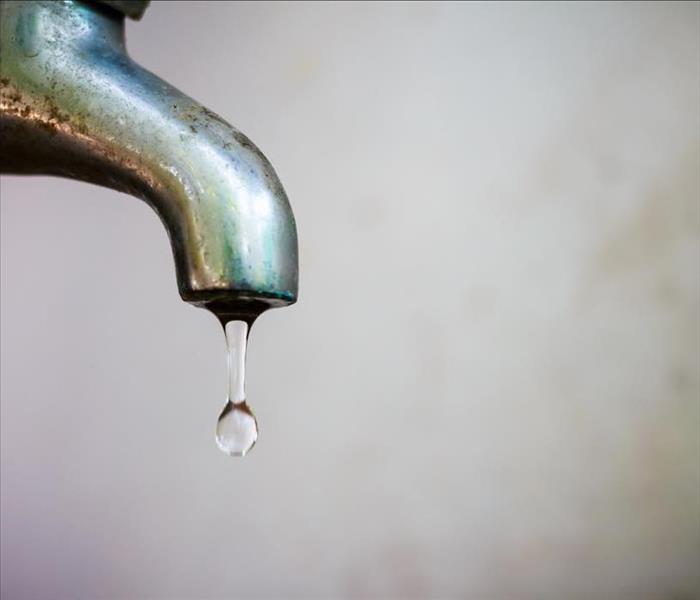 A dripping faucet can cause severe water damage to your Cedar Creek, TX home
A dripping faucet can cause severe water damage to your Cedar Creek, TX home
How To Determine What Type of Faucet You Have
On the surface, a leaking faucet may not seem like a big deal. Yet if the problem persists, it can cause severe water damage to your Cedar Creek,TX, home. Luckily, there are steps you can take to repair the leak before it causes a major issue.
First, however, you must determine what type of faucet you have. There are four main kinds:
- Ball
- Ceramic-Disk
- Cartridge
- Compression
No matter what type of faucet you have, you should start the repair process by turning off the water supply underneath the sink. You also need to plug the drain closed before you get started.
Ball Faucet
As its name implies, a ball faucet includes a ball bearing. You can find everything you need to fix this type of leaking faucet in your local home repair shop. You then just need to replace the valve seats, cam washers and springs and then put the faucet back together.
Ceramic-Disk Faucet
If your faucet has a ceramic cylinder, it is even easier to fix. Just remove the cylinder and take out the exposed seals. Clean the cylinder with white vinegar, and replace the seals with new ones if necessary.
Cartridge Faucet
To fix a faucet with a cartridge, start by removing the handle and any clip holding the cartridge in place. Remove the cartridge spout and use a knife to take out the old O-rings. Replacing these should fix the leak.
Compression Faucet
While the above faucets all have one handle that can be used to adjust the temperature of the water, a compression faucet has separate handles for hot and cold water. If the handles of this faucet are leaking, simply replace the O-rings. If the faucet itself is leaking, replace the seat washer.
A dripping faucet can lead to higher water bills, and, in more severe cases, major flooding in your home. If you are unable to stop the leaking faucet in time, or if a fixed leak returns and causes even more harm, water damage repair specialists can restore your home.
Effects of Water Damage on Building Materials
8/30/2019 (Permalink)
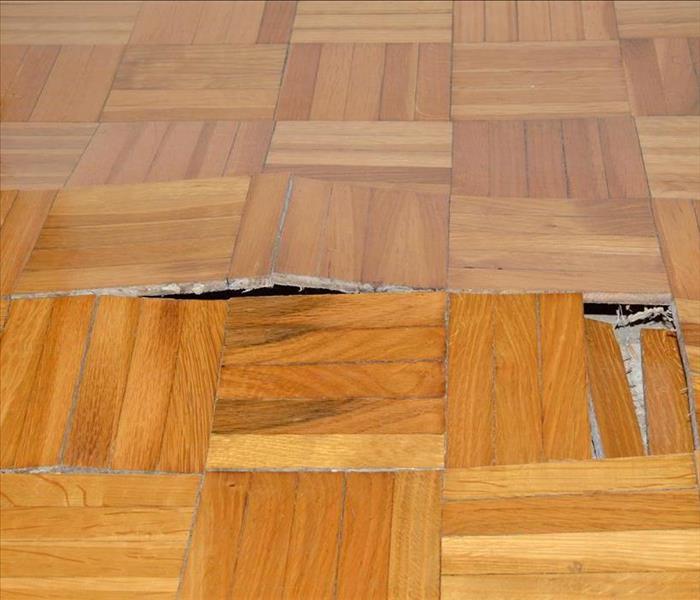 Swelling wood floor in North Loop, TX
Swelling wood floor in North Loop, TX
When it comes to building materials in North Loop,TX, homes, water damage can be devastating. From swelling wood and corroding metal, here are some of the effects of water damage to your property that might leave you on the hook for a water pipe repair.
Cosmetic Effects
Water damage can affect everything from the walls and doors to the windows and floors. Sometimes the outward appearance of damage can last a lot longer than the weather that caused the flooding in the first place. Here are some cosmetic issues you might face:
- Damaged wood floors can be a big issue with recently flooded homes, as the hardwood warps and becomes uneven.
- Blistering paint and peeling wallpaper can become very obvious in places sorely affected by leaky pipes or natural flooding.
- Baseboards and vinyl flooring can start to peel away from walls, especially in bathroom areas.
Structural Problems
Structural issues can also occur through long exposure to water damage from pipes or flooding. Whether it’s an internal supply line or damage hidden beneath the floorboards in your home, water can saturate and weaken the structure of your home. Metal pipes can tarnish and become frail, even corroding after a long period of time under the stress of water. Swelling wood panels and drywall can rot and crack irreparably. Seeking advice from an emergency restoration company is a good way to pinpoint these potential problems even if they aren’t currently visible. An expert opinion is essential to overcome the negative impact that water damage will have on the structure of your home and to prevent potential issues with mold and mildew. Depending on where you live, water damage can differ in impact to your home’s structure, so it also helps that qualified professionals know what to expect in the geographical area of your home.
“Like it Never Even Happened”
From swelling wood and drywall to mold and mildew, the aftereffects of flooding can be destructive to your property. Fortunately, emergency restoration experts can help lead the way in recovering from natural disasters and in water pipe repair, helping you have peace of mind.
The Importance of Cleaning Your Water Heater
6/13/2019 (Permalink)
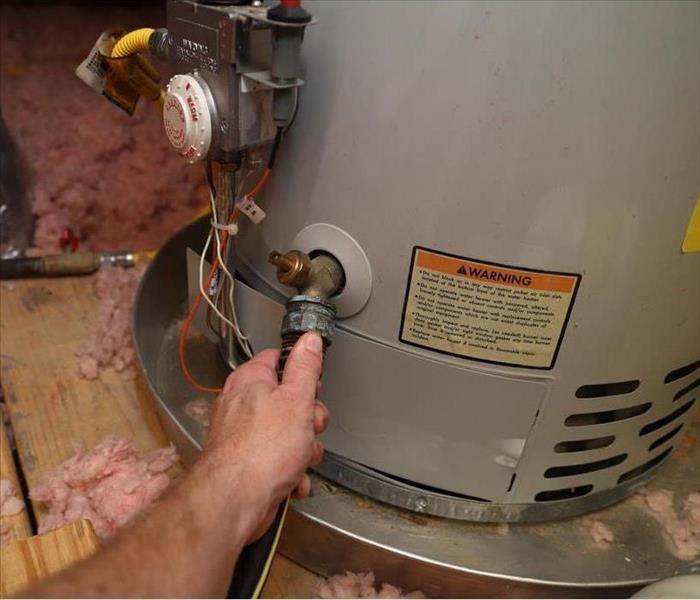 Flushing a water heater needs to be done every one to three years
Flushing a water heater needs to be done every one to three years
As part of your maintaining your home’s water heater, you need to regularly clean and flush it. Your heater uses both hot water that exits from the tank and cold water that runs down to the very bottom of the tank. Over time, sediment and mineral deposits will accumulate and can cause a variety of problems. Not sure if the heater in your home in Leander,TX, is due for a flush? Here are some useful tips on keeping your heater clean and avoiding some common issues that can occur.
Potential Issues
Performing a water heater flush can help homeowners avoid some costly repairs. A few common issues people run into include:
- Water heater tank leaks and bursts
- Low hot water supply
- Loud noises due to overheating
- Component failure
- Clogged pipes
If the tank does leak or burst, you will likely need to replace the heater and extensive water damage can occur. In this situation, you will need the help of a water damage cleanup company to rid your home of the water and repair any damage that occurred.
Performing a Flush
Fortunately, flushing your water heater is easy to do and only needs to be done every one to three years. You can hire a plumber to flush the tank or tackle the task on your own. Start by turning off the gas or cutting off the electricity to the heater and switching off the cold water valve. Next, turn on the hot water in one of your sinks and open the pressure relief valve. Connect a garden hose and have it run to a spot outside or a bucket. Turn on the cold water and allow the tank to flush until the water is mostly clear.
Being proactive in maintaining and regularly flushing your water heater can help you avoid unnecessary hassles and expenses in the long run. If it’s been a while since you’ve checked on your heater, quickly hire a plumber or flush the tank yourself.
4 Signs You Have a Leaky Shower
3/17/2019 (Permalink)
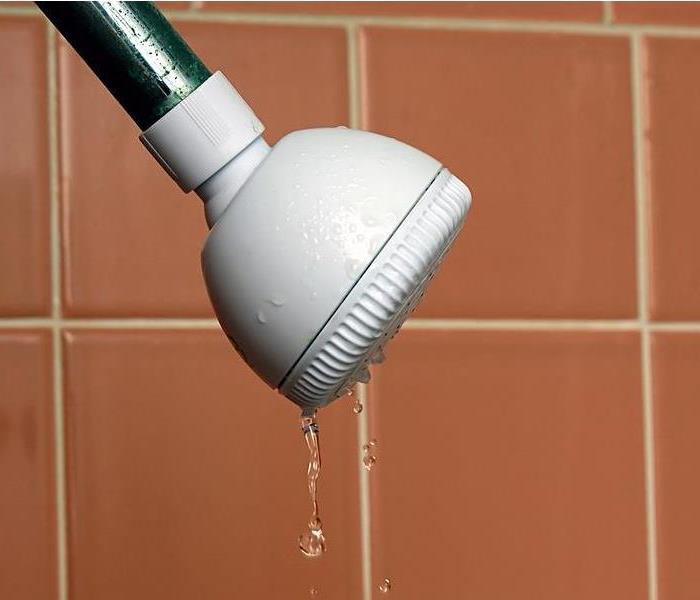 A shower leak can cause big problems in your Austin, TX home
A shower leak can cause big problems in your Austin, TX home
Leaky Shower
Because you use it so frequently, a shower or bathtub leak can cause big problems in your Austin, TX home. Sometimes, the leak can cause quite a bit of damage before you’ve noticed it. Here are a few signs to look out for that might indicate a leak in your bathroom.
1. Damaged Wall or Floor Structure
Over time, an undiscovered bathtub leak can cause severe damage to the structure of your house. If the walls or floors in your bathroom, or even the rooms around it, start to weaken, it might mean that there is a leak you cannot see.
2. A Musty Odor
Where there is water damage, there is often mold as well. If the leak is coming from the plumbing inside of the walls, you may be able to smell the growth before you can see it. If your bathroom is giving off a strong, musty odor that persists after cleaning, it is probably caused by a hidden mold growth.
3. Water Stains on the Ceiling Underneath
If you see water stains on the ceiling beneath your bathroom, this might be caused by a shower pan leak. Older shower pans that have worn out or new ones that have been installed incorrectly can cause damage to the surrounding area.
4. An Unexpectedly High Water Bill
Sometimes, the first sign of a problem is not visual damage. If there is a continuous leak in your home, you might end up paying a lot more for water than you were expecting. If your bill looks too high for the amount of water you use, then a leak might be to blame.
If you see any of these signs of a shower or bathtub leak, you should have it examined quickly. Because water can cause a lot of damage to the structure of your home if it’s not dealt with, it is a good idea to contact a water damage remediation company as soon as you notice the problem.
How To Know When Water Damage Requires You To Replace Your Carpet
1/18/2019 (Permalink)
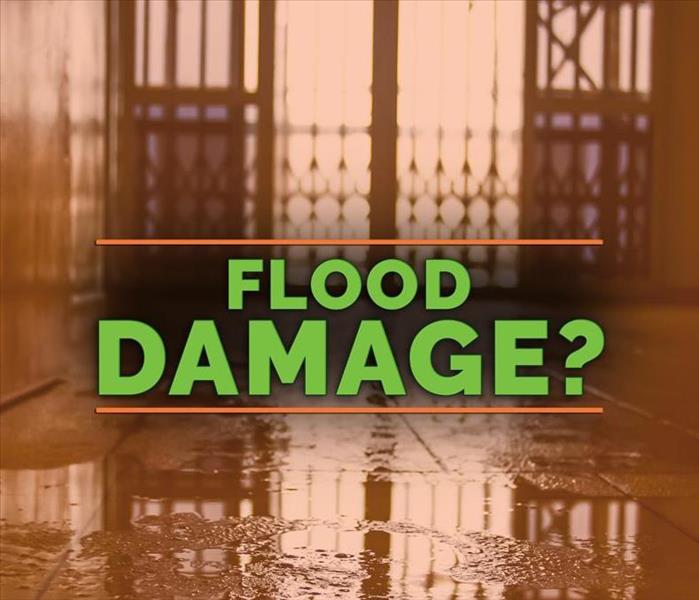 Call your expert to clean up and make your space safe.
Call your expert to clean up and make your space safe.
When water infiltrates your home, many areas can suffer. Your floor most commonly bears the brunt of a pipe break or other flooding problems. In many cases, a professional flood cleanup company will have to replace the flooring. However, if you’re fortunate, you may be able to salvage this part of your house. It’s helpful to know when your flooring needs to go and when you can save it.
When To Say Goodbye
You may hate to part with your carpet, but even moderate water issues can damage it beyond repair. Here are some cases in which you’ll need to tear it out and put down something new:
- You detect mold on or under the carpets.
- The carpet was wet for three days or more.
- The flooding included black water.
Can’t Deal With Mold
The amount of water and time it sits on your floor has a big effect on whether mold will develop. You can’t keep the flooring if mold is present. Have a specialist look for mold growth.
Time Is Not on Your Side
In the event of a pipe break, severe weather, toilet backup or any other incident that brings water into your house, you hope to detect it early. However, if you’re out of town at the time, or if the leak is in a place you can’t easily find, water can sit on the carpets for several days or longer. In these cases, it may be difficult, if not impossible, to sufficiently clean the area.
Black Water Is the Enemy
If the flooding in your Austin,TX , home came from sewage, you’ve got a black water problem, and restoration of the affected area is essential. Black water can be harmful and even deadly to you and your family members.
If these three issues are present following a pipe break or other cause of flooding, you shouldn’t try to keep your carpet. Instead, call an expert to help you clean up and make your space safe again.
5 Steps of the Water Remediation Process
12/19/2018 (Permalink)
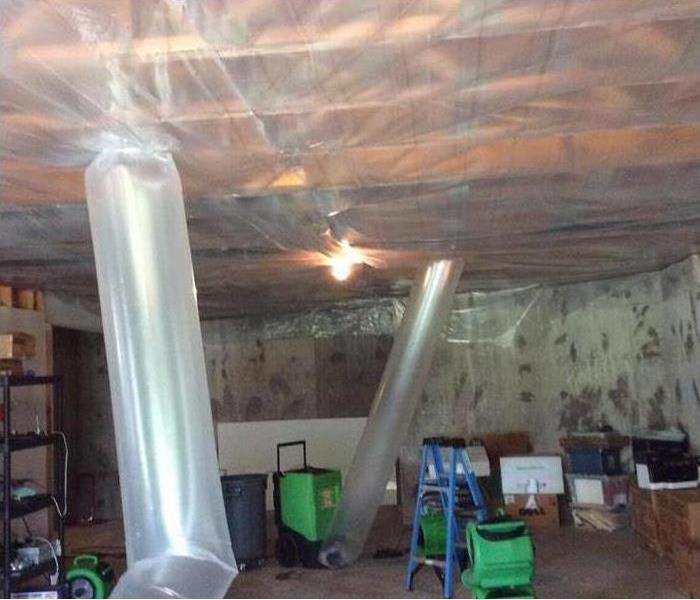 Drying process in an Austin, TX home
Drying process in an Austin, TX home
Water Remediation Process
When your home suffers water damage, you must clean it up quickly to avoid further problems. The best way to ensure that the cleanup process is done correctly is to hire water remediation specialists to guide the procedure. Professional technicians in Austin,TX, have the training and equipment to handle each step of the process from start to finish. Here is what you can expect them to do when they arrive at your home.
1. Turn Off Water at the Source
Broken pipes can expel a lot of water in a short amount of time. The first thing technicians will ask you to do when you call, if you haven't done so already, is to stop the flow by turning off the water at the main line.
2. Turn Off Power in the Flooded Area
Electricity and water are not a safe combination. Shut off breakers to the area that has the water damage so that if you or technicians need to enter the water, you aren't putting yourselves in danger.
3. Extract Standing Water
Standing water causes more damage in your home every minute it remains where it's not supposed to be. It sinks into the floor and seeps into the walls. Professionals can use industrial equipment to remove water quickly and safely.
4. Remove Wet or Damaged Items
After the water clears, items can be removed from the area to be dried and cleaned. If they cannot be salvaged, technicians will dispose of them properly.
5. Dry the Area
The last step of the water cleanup process is drying the area. This prevents secondary damage, such as mold growth, from happening. Once the whole space is dry, it can be restored so that it is usable again.
Unless the water damage in your home is minor, you need to enlist professional help to clean it up. They can remove the water and restore your property to prevent further damage.
Flush Your Water Tank and Keep Your Hot Water Flowing
10/12/2018 (Permalink)
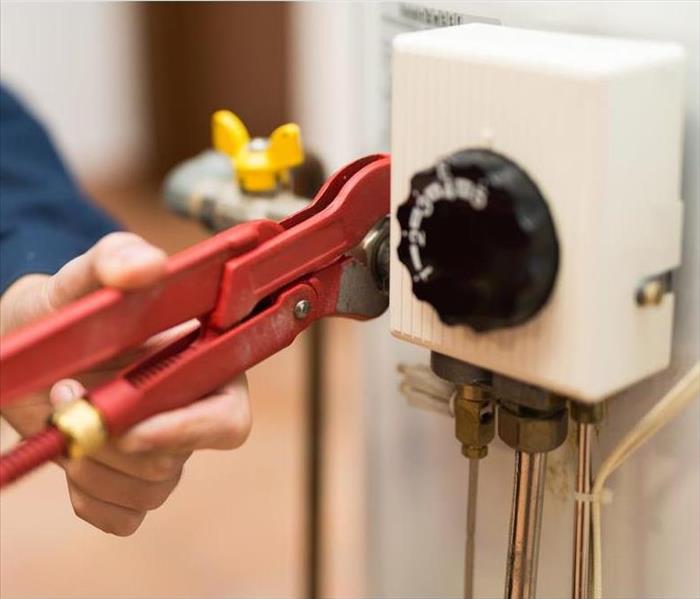 If your water heater fails call water damage remediation specialists in Austin,TX
If your water heater fails call water damage remediation specialists in Austin,TX
Performing this one-hour task once or twice yearly will save you money on repairs, reduce your energy consumption and keep your water heater running at peak efficiency.
It can be done in six simple steps
1. Assemble Your Tools
The tools needed for a water heater flush include:
- A garden hose.
- A flathead screwdriver.
- A pump or 5 -gallon bucket if no drain is available.
2. Shut off the Energy Supply
For gas heaters, shut off the flow of gas to the unit.
For electric heaters, turn off the appropriate circuit breaker.
3. Prepare the Tank for Draining
Attach the hose to the drain valve of the water heater. Ideally, the other end should go to a floor or shower drain that is at or below the level of the valve. If you don’t have such a drain, you will have to determine a draining method that works for you. Keep in mind that the water is hot and could cause burns or damage lawns and shrubbery.
4. Drain the Tank
The goal here is to drain the tank and flush it with clean water. This is a three-step process.
- Open the drain valve which allows tank water to flow out and fresh water to flow in.
- After a few minutes, open a hot water faucet in the kitchen.
- Finally, shut off the water. When empty, give the tank one last quick flush.
5. Refill the Tank
Close the drain valve and open the water supply. Once the open water faucet shows a steady flow of water, shut it off.
6. Turn on the Energy Supply
Just reverse what you did earlier to shut off the power supply. For gas, confirm that the pilot light is lit.
Failure of Your Water Tank Is Inevitable
When your water heater fails with a flood, you can call water damage remediation specialists in Austin,TX. They have the skills and the equipment to perform your cleanup and quickly return things to normal.
3 Ways Water Might Make Its Way Into Your Basement
8/15/2018 (Permalink)
Flooding can affect your Austin, TX, home for a wide range of reasons. Whether it's a busted pipe or an act of nature, you need to turn to a residential water cleanup professional to ensure the deluge is properly taken care of. When it comes to your basement, high waters can end up in this space in a variety of ways, including the following:
1. Heavy Rains: Rain usually flows into the ground and leaves your home unaffected by a basement flood. However, when the rain is heavy, it may affect the level of the water table. A higher water table can leave the liquid with little places to go besides into your home. Sometimes the fluctuation in the table can even affect the sewage system and cause a sewer backup in your house.
2. Frozen Pipes: The plumbing in your home could be another culprit for this type of flooding. If your basement is not properly heated during the winter, this space could be at a higher risk for frozen pipes. When the interior temperature drops too low, the liquid flowing in the plumbing starts to freeze and expand. This expansion can cause cracks to form. Once the water thaws, it may start to leak into your living space.
3. Leaking Pipes: Cold weather is not the only cause of a broken pipe. Leaks and other breaks can still cause a deluge of water without the sub-zero temperatures. If you ignore the need for a pipe repair, you may end up having to deal with a flood in your basement. Even if the leaking pipe is located on the top floor of your house, the water can travel through the walls and floors to find its way to the lowest point of your living space.
Understanding the reason behind flooding can make it easier for you to create a cleanup plan. It's important to remember that your water problems could be caused by a unique situation.
For more on Austin click here.
3 Types of Contaminated Water You Deal With After a Flood
6/20/2018 (Permalink)
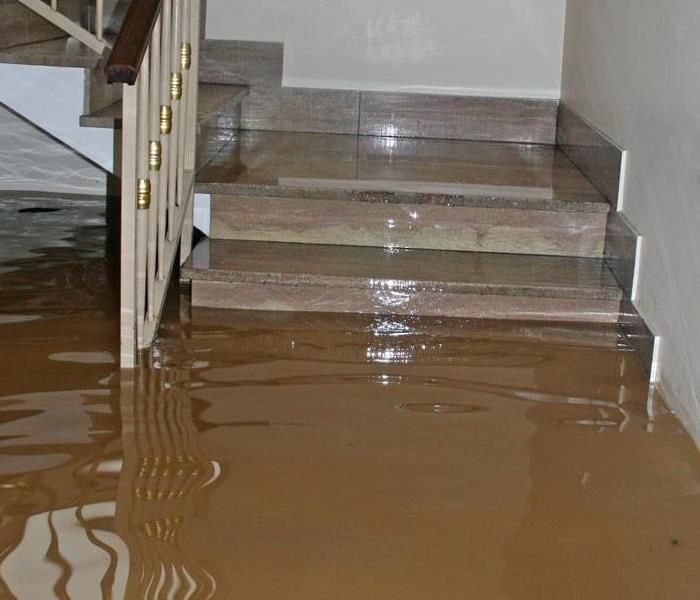 Austin Texas Residential Flooding
Austin Texas Residential Flooding
If you’ve never dealt with a flood, count yourself lucky. Those homeowners who have experienced this inconvenience and potential disaster know the dangers and the costs associated with water making its way into your home. It’s important to remember that Austin, TX, floods can introduce contaminated water. This type of water comes in three forms or levels. If you can identify these types, it will be easier for you to know how to clean up and properly and what type of help you should seek.
Category 1: Clean Water
At the very least, when you experience flooding in your basement or in any part of your home, you’ll have Category 1 water to deal with. It has some of the following characteristics and concerns.
• Leaks into your home from a broken or damaged water supply line.
• Comes from a leaky faucet in a kitchen or bathroom.
• Can become worse if you don’t address it quickly.
Category 2: Gray Water
Gray water is a more serious form of contaminated water that can come from appliances such as your washer or dishwasher. If someone ingests this water, he or she could become sick because the water could contain bacteria. However, if you don’t properly clean this up or fix the problem, the water could develop into Category 3 water.
Category 3: Black Water
This floodwater is a grave concern because it contains sewage, including feces and harmful microbes. It can cause serious illness or even death if ingested. This contaminated water will come from rivers or from your toilet bowl. It’s essential to contact a professional immediately to remedy this hazard.
When you understand the types of contaminated water you face after a flood, you’ll know how to act properly. A professional company can help you get things back to normal at home.
For more on Austin click here.
SERVPRO Hyde Park / Central Austin Saves Sunday Mass Confusion
5/31/2018 (Permalink)
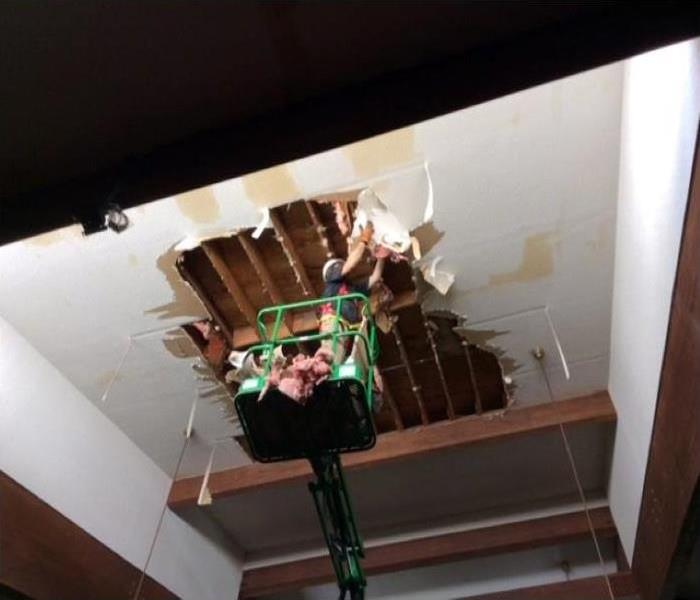 Crew harnessed in on the scissor lift
Crew harnessed in on the scissor lift
Recent storm activity produced heavy rains and flooding in Austin, TX. Local SERVPRO of Hyde Park / Central Austin is called out for a water damage job caused by a leaking roof at local church. Church officials requested all work be completed for Sunday Mass.
The High ceiling and Church pews made for a challenging job. The SERVPRO Team obtained a scissor lift so crews could start work right away. The crew used masonite to protect the carpet and tile flooring from the weight of the heavy scissor lift and the hard rubber tires. Crews worked carefully and diligently to get the wet drywall removed prior drying all the remaining structure materials.
The SERVPRO crews finished their job in 4 days leaving the church with plenty of time to prepare for Sunday Mass.
To see some of our job before and after photos Click Here
Restoring Safety: The Process of Sewer Cleanup
4/9/2018 (Permalink)
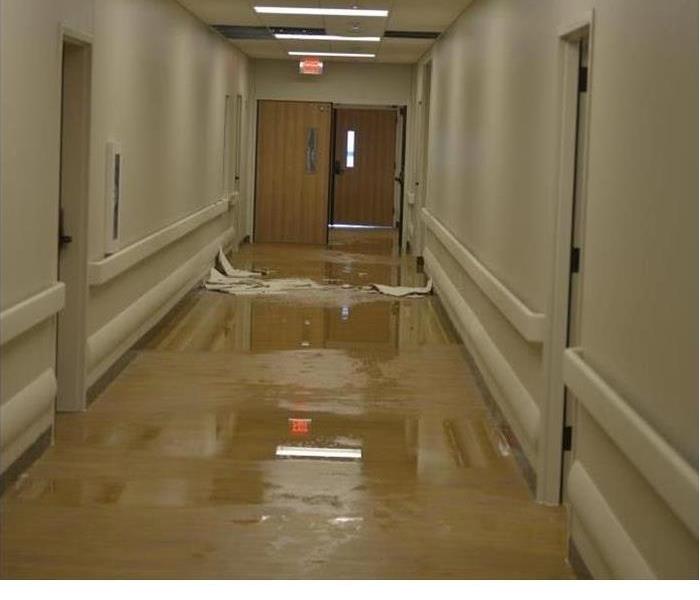 Water Loss in Texas Hospital
Water Loss in Texas Hospital
When your business in Cedar Creek, TX, experiences damage from a flooded toilet or sewer backup, the sewer cleanup process is a little more intricate than just wiping everything down with disinfectant towelettes. You need to make sure everyone is safe and then call in the professionals. Restoration specialists can dry the area, clean it, and test it to ensure that all harmful microbes and bacteria are gone. Here is what you can expect from this process.
1. Identifying and Repairing Source of Problem
The first thing technicians will probably do is stop any ongoing issues so that the mess does not get larger. Once the flooded toilet has been unclogged or the lines cleared, sewer cleanup can begin.
2. Removing Water and Sewage
The bulk of the water must be removed before anything can be cleaned. Professionals use the proper equipment to remove the water and dispose of it properly.
3. Identifying Salvageable vs. Contaminated Items
After most of the contaminated water is gone, individual items are evaluated. Some may be able to be cleaned and saved, but others will have to be bagged and thrown away. Before discarding any items, make sure you take photos to prove the loss to the insurance adjuster who decides how much your policy covers.
4. Drying and Cleaning
Next, the technicians will finish drying the building with water extraction equipment. They may have to remove parts of the wall or any insulation that was affected by the contaminated water and replace it with clean drywall. Anything that remains must be disinfected with chemicals that have been specially formulated to combat the contaminants in the sewage.
5. Testing
The final step is vital for making sure that the effort from previous steps was effective. Technicians test for contaminants and hopefully declare your building safe.
Once everything has been cleaned and tested, items can be moved back into place. The completion of the sewer cleanup process means you are back in business.
Visit us at http://www.SERVPROhydeparkcentralaustin.com for more information.
Water Heater Leaks and Flooding: What To Know About the Cleanup Process
3/21/2018 (Permalink)
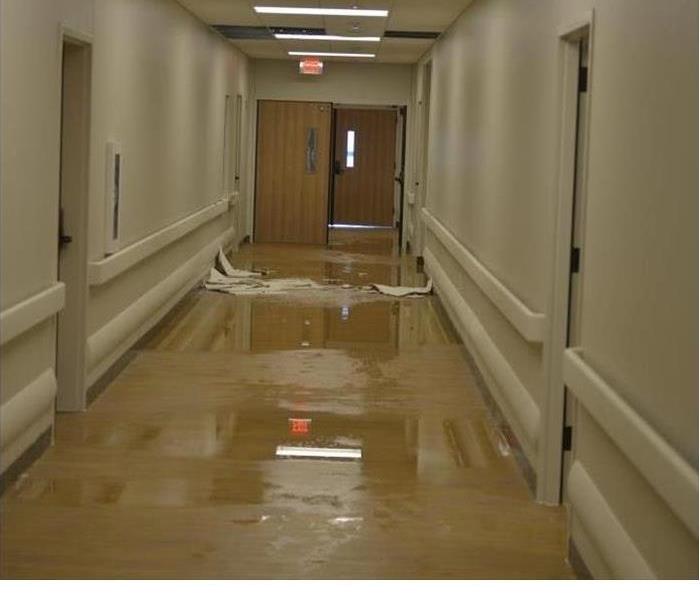 Hospital Flood after Water Heater break
Hospital Flood after Water Heater break
A leaking water heater can wreak havoc in your Hyde Park, TX, home and often do so unexpectedly. Sudden, high-pressure leaks or a burst tank can flood the area and cause damage to the floors and any items you might have stored nearby. Calling in a professional flood cleanup and restoration company can help you resolve the problem, and there are a few important points about this process that you may want to know about so you can feel more confident about the condition of your home once it is complete.
Quick Response Can Be Vital
If your broken water heater is flooding your garage or utility room, the water can damage not only the floor and walls of the space but also any electrical systems that might be housed there. For example, if your fuse box is located nearby, high-pressure water leaks can cause it to short out or even damage it beyond repair. Flood technicians can address the source of the leak quickly and shut off the water before any major systems are affected.
Drying Systems May Be Put Into Place
A failed water heater can cause the humidity to increase in your utility room and ruin items that were not initially touched by water. These can include a variety of vital structures and appliances:
" Flooring
" Ceiling
" Your washer and dryer
Lowering the humidity in the area with large fans and other professional-grade drying systems can prevent these structures and items from being damaged by the humidity a leaking water heater can cause.
Flood Damage Appraisal
Once the water is removed from the area around your water heater, cleanup and restoration techs may discuss the damage with you and offer you several repair solutions, including replacing affected walls, insulation and flooring. They can also offer you advice about how to dry out wet items or whether some might need replacing.
Dealing with a broken water heater in your Hyde Park, TX, can be a frustrating task. However, being able to work with flood cleanup professionals who come to deal with the flood can help you understand the cleanup process and feel confident that the damage can be repaired.
Visit us at http://www.SERVPROhydeparkcentralaustin.com for more information.
Common Causes of Flooding
9/27/2017 (Permalink)
Common Causes of Flooding
Water damage is one of the worst possible situations that can happen to a property. While other forms of damage, such as those cause by fire or winds, are always obvious and self-contained, prompting the property owner to take immediate action to remove any ongoing source of damage and begin repairing what's been destroyed, flood damage is far more insidious. A flooded home or business may not appear to be in dire circumstances. This is especially true if the source of the flooding leads to a relatively minor amount of water damage, such as that caused by a supply line break or a pipe break. This can easily fool a property owner into thinking that they can handle the restoration of the property themselves or even that they don't need to take any action at all. Both of these decisions are almost always a serious mistake.
The truth is that even small amounts of water damage can quickly spread, compromising the structural integrity of the property and causing mold and mildew formation. Flood damage can also lead to foul odors that may become virtually impossible to get rid of unless prompt action is taken to minimize the impact of the water damage.
Luckily, nearly every town in America has a professional restoration company that is able to help people through difficult flooding events. Below, we'll discuss some of the things that one might expect from a professional restoration company once they've been called to the scene of a water damage event.
The most important thing is to call in a professional restoration company
It is vital to remember that the single most important thing that the owner of a flooded home or business can do upon recognizing flood water in their home or water in their business is to call in a professional restoration company.
Water cleanup professionals will have thousands of hours of experience dealing with restoration and mitigation efforts on flooded homes and businesses. They also have the training and knowledge necessary to get the restoration and mitigation efforts right the first time. A professional water cleanup team will have heavy-duty equipment at their disposal, able to quickly tackle even the toughest restoration and mitigation requirements.
Many home and business owners are of the do-it-yourself school of property maintenance. While that is often fine for things like landscaping and painting, dealing with the mitigation of damage in a flooded home or business is not the time to start trying to save money by doing things yourself. In fact, property owners attempting to cut corners by not calling in professional water cleanup specialists is one of the chief causes of property loss due to flooding in the United States today. It is absolutely crucial that anytime a property owner detects flood water in their business or water in their home that they promptly call in the professionals.
The call is made and the cleanup team arrives
Once the call is made to the water cleanup and flood damage specialists, they will arrive at the scene within minutes. They will immediately go to the source of the supply line break or pipe break and stop the flow of any active leaks. They will also carefully inspect the area around the pipe break or supply line break, taking account of any water that may have seeped into structural components.
The team will remove standing water
Next, the team will remove any standing water in the home or water in the business. This will be done through the use of heavy-duty vacuum equipment, which can removed thousands of gallons of water in the business or water in the home per hour.
The drying process is begun
The team will then use industrial drying equipment to begin drying the premises. The area around the original pipe break or supply line break will be surrounded with specialized drying equipment. This will ensure that even hidden moisture is completely removed. At this point, all flood damage will be fully remediated.
Visit http://www.SERVPROhydeparkcentralaustin.com for more information on water damage.
The #1 Natural Disaster in The U.S.
8/29/2017 (Permalink)
The #1 Natural Disaster in The U.S.
The U.S. is a beautiful place to live, but few would argue that it doesn't have its fair share of natural disasters for homeowners to battle. Not too surprisingly, flooding is usually the number one natural disaster in the United States annually. This leaves many homeowners confronted with the possibility of flood damage in the home. Water in a home can be a shocking sight. It stands as it is and has no respect for the precious memories and possessions inside a home. Water in a business doesn't respect office furniture, either. Of all the reasons for water in a home - from a supply line break to a pipe break - flood damage remains the number one reason to call a water restoration expert.
Water damage occurs when the water from a flood spills over into a home. In very severe floods, the water in the home can reach upper levels. A flooded home quickly begins to deteriorate. Of all the water that can get in a home, flood water is the most toxic to physical objects. It contains bacteria, mud, and miscellaneous toxic chemicals picked up on its journey into the home. If you've got flood water in your home, there's no time to waste in calling a restoration company. A restoration company can assess the damage and begin mitigation immediately, making it more likely that you'll be able to salvage the precious memories and objects within the home.
How professionals address a flooded home
A flooded home will quickly fall prey to the elements. What a professional does is to carry out mitigation and assessment of the water levels in the home. They use specialized equipment such as moisture sensors to assess water damage and create a water cleanup plan. Water cleanup in a flooded home is a massive project and not something that should be taken lightly by homeowners. Flood damage is always a reason to call a professional at restoration.
Certified equipment for flood damage will be brought on the scene and used for drying, mitigation, and restoration. Industrial drying, moving, and blowing of the water damage at the scene enables professionals to provide a level of restoration that is not possible with everyday household tools. Drying can be an especially lengthy and tedious process if you attempt to go it on your own. A restoration company has the industrial grade, certified equipment to make drying go much more quickly. This reduces water damage in the home and makes water cleanup much easier.
Mitigation continues after the water cleanup is completed. Restoration is possible with industrial grade dryers and equipment that make the cleanup a success. Any leftover moisture is going to make water cleanup a failure and leave objects in the home, including flooring, susceptible to damage. Due to the weight of flood water, it's also possible to suffer other kinds of damage. You might have a pipe break or supply line break due to the weight of flood water, leaving still more damage to the home at risk. Water in a business is no different because water doesn't respect anything. It just follows its natural laws. A supply line break or pipe break is just as likely to happen when water is in business.
Call a professional water restoration company
Whether you have a supply line break or pipe break in a business, or flooding in a business or home, a restoration company is going to be your best friend in this situation. Only they have the necessary tools and knowledge to successfully handle flood water in a business or in a home. Your home is a sanctuary for you and your family. Any invasion by water should be treated seriously, especially if the culprit is dirty flood water. The moment you know that flood water has entered the home, it's time to call a restoration company.
Visit http://www.SERVPROhydeparkcentralaustin.com for more information on water damage.
Steps to Achieving Superb Water Damage Restoration
7/25/2017 (Permalink)
Steps to Achieving Superb Water Damage Restoration
Water damage restoration is a multi-step that requires the help of trained water damage experts. Here are some few steps to effective water damage restoration:
Initiate a visual inspection
It's important that you have a certified restoration company to conduct an initial assessment. This is important in evaluating the right action required to reverse the effects of water damage that might have resulted from the supply line break. Once it's determined that there are no safety hazards, the contents need to be secured and the mitigation process initiated.
The water extraction
Ensuring effective containment of water resulting from pipe break and the resulting flooding water in business or at home should be a top priority in water damage mitigation. Water cleanup should be the next step, and this involves removal of wet materials such as toys, clothing, pillow, and throw rugs from the affected areas. Once the water is extracted from your flooded home, technicians should remove any wet surfaces on the floors, ceiling, and walls – this will expedite the drying process.
Stabilizing and drying
Once the extraction and water cleanup is done, the drying process can now begin. It's important for commercial grade equipment to be used in such a process and this can include wet floor drying systems, dehumidifiers, and air movers. Also, the environment needs to be monitored every day and the progressive results documented. The restoration company also needs to know that moisture control is essential in preventing growth and that drying should take at least 2 to 4 days depending on the materials impacted and the scene of the flooded home.
Reassessment of the damage
Once the structural damage resulting from water in a home is complete, the restoration company should conduct another inspection to get rid of any hidden pockets of moisture that can result in mold growth or water related damage. Once the mitigation of flood damage that resulted from water in a home is done, then the structural materials need replacement reconstruction. This is critical in ensuring that your once-flooded home is healthy, safe, and restored back to its original state before the flood damage.
Recovering from flood damage
There is nothing as frustrating as coming home after work or from a vacation to find a wading pool in your house that's resulted from the supply line break. It's therefore important to start the water cleanup process of the water in a home as soon as possible. These steps will help homeowners as well as the restoration company to keep the flood damage at a minimum:
If your flooded home resulted from supply line break that caused soaking of the drywall, then it's important that you remove the foot above the watermark and discard. If this happened to your business, then the resulting water in business need to be drained out of the walls by drilling holes close to the floors and removing the baseboards.
Pipe break is one of the root causes of flooded homes, and it's important that water cleanup starts by getting rid of any contaminated materials such as wood by-products and drywall that results from the flooded water in business or at home.
Whether the water in business or your home led to supply line break or pipe break, it's important that you move items such as furniture and get rid of the wet or moldy carpet.
If your central heating came in contact with flooded water as a result of pipe break, they should be checked by an expert.
If you have food products that came in contact with water in a home, then they should be thrown, unless they were stored in water tight containers.
The overall aim in any mitigation effort is to restore your home or business to its original state after the restoration. That's why it's a good idea to contact a reputable restoration professional for a perfect finish.
Visit http://www.SERVPROhydeparkcentralaustin.com for more information on water damage.
Simple Tips for Preventing Water Damage
6/19/2017 (Permalink)
Simple Tips for Preventing Water Damage
Water damage is among the most dangerous and devastating things that can happen to anyone’s home or office. Water cleanup is not a simple process, and restoration by a professional is what’s required when anyone finds water in the home or water in the business. Water damage causes serious consequences for home and business owners, and mitigation is not an option. The best way to deal with water cleanup and water in the home, water in the business, and mitigation is to prevent water damage before it occurs. It’s not always possible to prevent water damage from occurring, specifically when it applies to flood damage and other storm damage. It is easy to prevent damage from requiring water cleanup, restoration, mitigation, and drying by preventing it from occurring when it’s unrelated to storm damage.
Flood Damage and Drying
Flood damage is not easy to control. Water in the home or water in the business that occurs as the result of a storm and subsequent flood damage is all but impossible to prevent. Home and business owners can try to keep water from getting into their home or business by laying sandbags at the doors and utilizing other techniques to prevent water from entering a dwelling during a tropical storm, hurricane, or when storm surge is a problem, but it’s almost impossible to control what happens.
Anyone who finds water in the home or water in the business following a storm despite their best efforts to prevent water entry must tackle water cleanup right away. Restoration and mitigation must occur as soon as it’s safe to enter the building. The drying process should occur no more than 24 to 48 hours after the water enters the building, though drying should really begin sooner for the best results. It takes virtually no time for damage to occur as a result of water damage, which is why restoration must occur immediately.
Preventing Leaks and Floods at Home
There’s not much anyone can do about mother nature, but there are a few things home and business owners can do to prevent water from damaging their buildings due to leaks and other issues. The easiest way to prevent water from damaging the home is to immediately stop any leaks. Home or business owners who notice a leaking pipe should immediately tackle the project. It might seem unimportant to handle a leaking faucet right away, but it’s often the thing that prevents worse damage from occurring. It might look like a leaking faucet, but it could be the result of a much bigger leak elsewhere.
Anyone who travels for long periods of time should take it upon themselves to shut off the main water valve in their home or business when they’re away and no one is present. This can prevent the catastrophe of a major leak or water damage when a dwelling is empty for an extended period of time.
It’s also helpful to maintain a regular schedule with the plumber and the septic company. When it’s time to have the septic tank drained, home and business owners should act quickly and efficiently. Delaying this kind of project could cause sewage to back up in the home or office, and this kind of water cleanup is far worse than any other.
Preventing leaks, damage, and other water or liquid from causing issues in the home or office is the best way to handle damage. Mitigation and restoration are required if any water gets into a home or office, though. Inadequate handling of this kind of damage, and inadequate drying or cleanup can result in far more damage, more expensive repairs, and even full replacement of walls and floors. It’s not worth the price home or business owners pay to tackle this project without the help of a professional.
Visit http://www.SERVPROhydeparkcentralaustin.com for more information on water damage.
The Steps to Take After Water Damage Occurs
6/19/2017 (Permalink)
The Steps to Take After Water Damage Occurs
Flood damage, a burst pipe, or any other form of water in the home or water in the business calls for immediate action. Many home and business owners mistakenly assume they can handle whatever water damage occurs in small doses on their own, but this couldn’t be further from the truth. Water in the home or water in the business is dangerous no matter the source. Many assume flood damage is all that requires immediate water cleanup and restoration. It’s all damage from water that requires immediate mitigation. The smallest ongoing leak is enough to cause more water damage than most people realize, and it requires the assistance of professional water cleanup, restoration, and mitigation services. If any homeowner or business owner finds water in the home or business, there are proper steps to take to ensure water cleanup and the drying process are handled accordingly.
Call for Help
No amount of water damage is safe. Water in the home and water in the business in any amount is dangerous, and it can lead to much larger problems. To sum it up rather quickly, any amount of water damage can cause mold to form almost immediately. Mold only needs a few hours to spread rapidly, and leaving the water cleanup too long can result in the immediate need to replace walls, floors, and it can cause thousands of additional dollars in damage. Once a homeowner finds water in the home or a business owner finds water in the business, it’s time to call for professional drying services and remediation.
Turn Off Electricity
One of the biggest mistakes anyone makes when they find water in the home or water in the business is walking in without proper permission. The restoration and mitigation process must wait until there is no power in the building. Standing water and electricity are not a good mixture, and it’s imperative the power is turned off prior to anyone entering a building with any water.
Cleanup
Immediately after calling for professional mitigation, it’s necessary home and business owners begin the cleanup process. Water cleanup cannot wait, and the drying process must begin immediately. When it’s safe to enter a home or business with water damage, home and business owners must begin removing their personal belongings. The best place to put them is in a garage or on a driveway where they have a chance to begin the drying process.
One tip for all home and business owners to remember is they should not remove their own flooring or walls until professionals arrive. This is a job left to the professionals, and it might turn out it’s not even necessary. This is why it’s imperative to call for help to find out what must be done and in what order.
Call Insurance
Homeowners and business owners must call their insurance company as soon as flood damage or other water damages their home or office. An adjuster must come out to assess the damage to file a claim to get financial help your way sooner rather than later. It’s important to call for mitigation first, but it’s also important everyone remembers to call their insurance agent next. If there is storm damage, it might mean waiting a little longer than usual to get an adjuster on site as many other homes and businesses might also require extensive water cleanup.
There is no time to wait to seek water restoration and cleanup following a storm, a burst pipe, or even sewage backup. It takes very little time for a simple leak to cause so may expensive problems it leaves home and business owners in shock. Call immediately, and do nothing until professionals give the green light to enter a building when any flood damage or other damage has occurred in a home or in an office. It's imperative homeowners and business owners follow these strict instructions.
Visit http://www.SERVPROhydeparkcentralaustin.com for more information on water damage.
Life After Water Damage
3/30/2017 (Permalink)
Life After Water Damage
It's a great day in Hyde Park, great except you have just come home to discover that your home sweet Texas home has been damaged.
Damaged by what? One of a homeowner's worst nightmares, water. Not only do you have to deal with water in your home, but also with the water damage to your belongings. And if that wasn't bad enough you get to top it off dealing with the insurance company. Many insurance policies do not cover flood damage or water cleanup. You'll need to look over your policy well to ensure that you are covered, hopefully before disaster strikes. Once you have called your insurance company you can get moving to what matters the most to you, mitigation. Everyone hopes that the flood damage won't take everything, and with proper clean up you can get on with your life with many of your possessions as well as your home still in good condition, though you may still have some things that are too damaged to be saved. Remember to take pictures of everything, this will help you with your insurance claim. Keep in mind when taking pictures that you want to show water damage to the home structure, furnishings, as well as your belongings. All the details that matter to you matter to your claim.
Now that you have all the insurance aspects are handled you're going to be eager to start water cleanup. Just keep in mind Austin, TX, safety first! Be sure you look around the structure carefully to be sure that it is safe to enter. Turn off all electric to your home, and then check out the structure to ensure that it is safe enough to go in. Once inside take care to avoid slips and other injuries while cleaning. You will also need to take steps to make sure that further damage doesn't occur, board up windows, and secure tarps or plastic over any holes you may have. Now that there is water in the home it has to come out. You can use pumps to remove that water, then just mop and blot up the remainder.
Any items that are soaked will have to be removed. This can be anything: carpeting, bedding, clothing, furniture. you'll have to decide that can be saved through drying and what you're going to throw away. Many items can be saved and cleaned and then some won't be worth the expense. This is likely to be far more time consuming than water in a business would be since you are going to have to go through every item you own. Remember to be safe and wear gloves and other protective gear as this water can be contaminated with bacteria as well as household chemicals.
Using a restoration company can really help with the mitigation process as they can clean and safe more of your belongings than you could on your own. Do keep in mind that the hot Austin, TX sun isn't going to do the drying itself, air movement is going to be super important to your efforts, so make sure that your home is well ventilated to ensure things dry as quickly as possible. Somethings you may want to take outside to dry. Be sure to prop things such as cushions up so they can get the maximum airflow and will be less likely to mold. Be sure that you don not try to use any electronics that have gotten wet. This will cause irreparable damage and the item will then have to be replaced rather than restored.
Yes, that house in Hyde Park looks a mess right now, but it won't take long before it starts to look like a home again. The hardest part for most people is looking through all the keepsakes that they can't replace such as pictures and thinking that there is no hope of repair. Don't worry Texas, there are options out there. A quick search online will give you hope that more can be saved than you think, not just your photos but documents as well. Just be sure that you get in touch with them quickly as mold can begin to grow in as little to 24 to 48 hours. Be sure that you document any thing that you do throw out for your insurance company, this will help get your belongings replaced.
Sometimes you will even have to get water out of your walls. Just be sure that you take pictures of your wall before you remove any wet baseboards or wall covering. You can put small holes at floor level in your wall to allow water to escape. In summer you can turn on your air conditioner to help with air movement and drying times, if of course it is safe to do so.
Your home may be able to be lived in while being cleaned up, if so be sure that you ensure safety while doing so. Use flash lights and candles if need be to see in dark rooms. Do not eat or drink anything that has been contaminated by the flood water. If your home can't be lived in while being restored you can contact your insurance company and find out what they can do, they may cover living expenses while you can't be in your home, this is another difference between water in a home and water in a business.
While there are many things that are important to do there are also so things that it is important not to do. Just keep these things in mind and you'll have your home back in shape in no time. Visit http://www.SERVPROhydeparkcentralaustin.com for more information on the water restoration process.
Water Restoration- The Dehumidifier
3/13/2017 (Permalink)
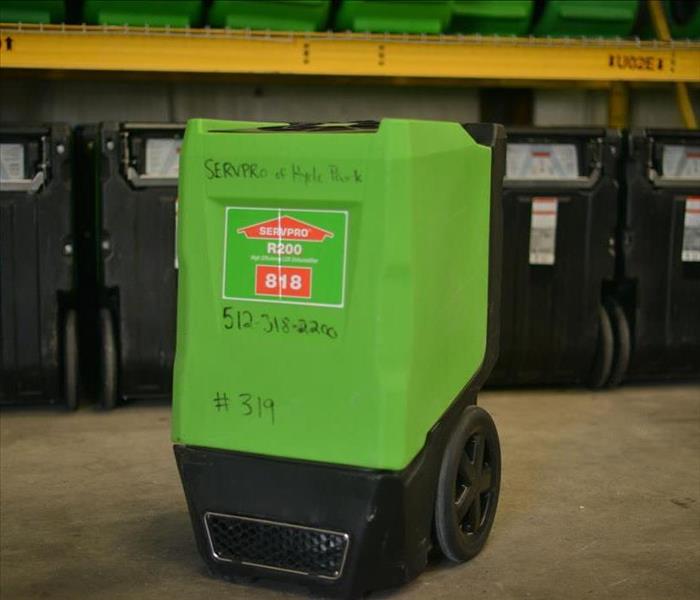 Water Restoration Dehumidifier
Water Restoration Dehumidifier
In the South part of the U.S. the low grain dehumidifier is the work horse of most water restoration projects. With common exterior humidity not conducive to drying, most structures affected by water damage would not dry in places like Florida, Texas, or Louisiana without the aid of additional evaporation. We achieve this through the use of low grain dehumidifiers. As "wet" air travels through the machine the moisture is pulled out through condensation. This reduces the moisture content of the air and produces warm, dry air ready to take on ambient moisture and once again go through the drying cycle. Occasionally the condensate builds up to a point the reservoir must be emptied which happens via a pump and expulsion tube commonly inserted to bath tubs, sinks, or other plumbing lines. It is surprising to most people that in the early stages of a water restoration project 20 gallons of water can easily be pulled straight out of the air in a single day. With only a few amp draw (similar to a common refrigerator) these efficient units make the advanced drying of today possible. If you ever have any questions give us a call SERVPRO of Hyde Park / Central Austin
Did the Water Restoration Company really dry everything out?
3/13/2017 (Permalink)
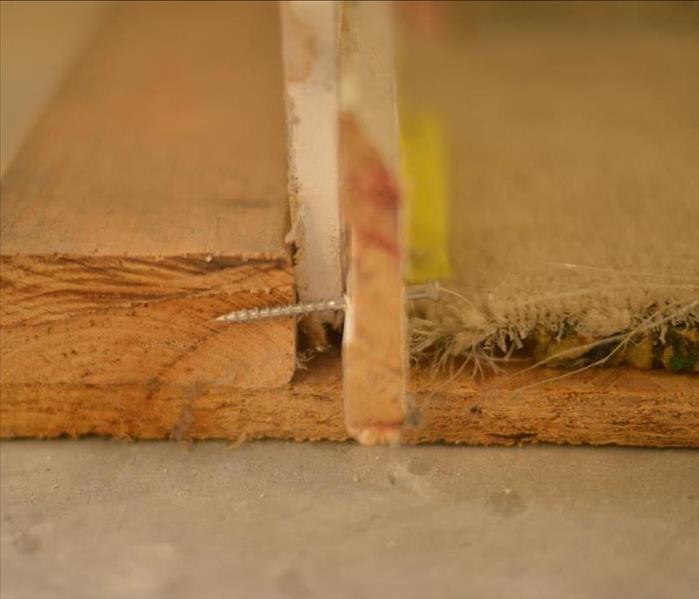 Tools we use when training our techs
Tools we use when training our techs
I have watched this industry change quite a bit over the past 20 plus years. There have been a number of factors influencing this change: Technology, research, changes in billing practices, litigation and (most influential) the media. The change brought by the media is that more and more mitigation (our main function) has become a term not unfamiliar to the common person any longer. Couple that with the news coverage of mold and we have more homeowners asking better questions! By far the most common question: "How do we KNOW it's dry??" Unfortunately more often than not water restoration "experts" have more faith in their science than they should and do not fully confirm every material is fully dry on every project. This is because a special practice is required to 100% confirm all substrates are dry. Here at SERVPRO of Hyde Park / Central Austin we do things a little more innovative. Pictured above is what is commonly referred to as a "screw set". Now, this is our in house training tool, so, this is a cut-away illustrating proper application of this technique. As one can see in the photo a stainless steel screw is set through the baseboard, drywall and sill plate allowing us to read all three substrates at once. There should be a screw set at the point of water penetration at the very minimum by the end of the project. It is also common to have multiple other sets in various other areas of concern such as window sills, door headers, cabinets, etc. If your water restoration company isn't setting screws, they aren't getting all the data!
Water Damage 101
3/3/2017 (Permalink)
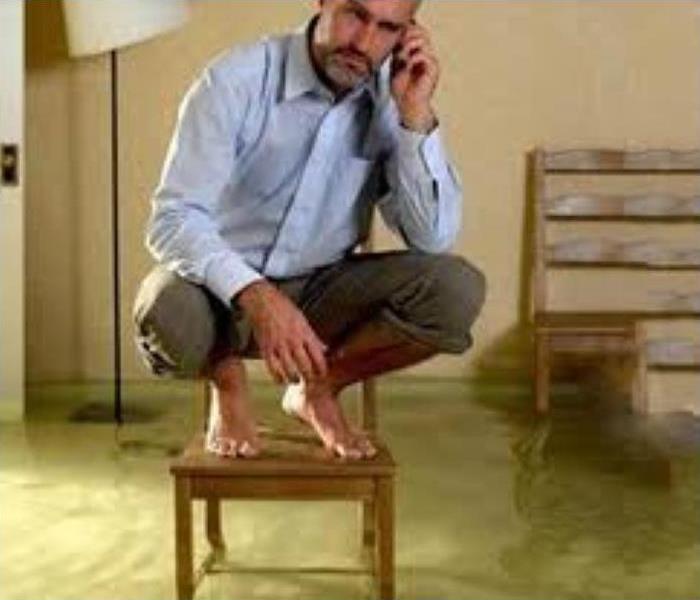 Be prepared.
Be prepared.
Call SERVPRO of Hyde Park / Central Austin. Mitigate the loss as quickly as possible. First by stopping the water source. If it's a plumbing break or leak turn the water of at the main if you have to. Put towels down to dam up pooled water from spreading. Now focus on saving your content and start moving your content to a dry area. If the dry area is carpeted put tin foil under any wooden feet to avoid furniture staining.
If the water sources was from above start clearing out your contents that are below in case the water starts to migrate down. Be careful sagging or collapsed ceilings that may fall or continue to fall.
Just remember, if you have already called SERVPRO, don't worry about the mess. Save your content from any further damage and stop the water source.
Water Damage 101
3/3/2017 (Permalink)
 Call the SERVPRO Hero Team
Call the SERVPRO Hero Team
Did you know by waiting too long before you react to a water loss can cost you big. You can mistakenly cause a minor water damage to go from a simple job and covered loss, to large non salvage-demo job. By your delays, you can also compromise your coverage. Most policies read it is the insured's responsibility to mitigate.
If you have a minor fresh water leak chances are we can come in and dry everything in-place. By waiting, after 48 hrs we are going have to remove baseboards at a minimum and many floor coverings may not be salvageable at the point.
After several days chances are we are going to need to remove all wet porous materials like drywall. This could impact cabinets and counter tops or tiled walls and most floor coverings at this point are non salvageable.
If your insurance company denies coverage that is a lot of expense to risk by not calling SERVPRO of Hyde Park / Central Austin as soon as you learn you have a water loss.
Spring Rains, Rising Water, Road Closures = Lake Travis is Full Again
7/20/2016 (Permalink)
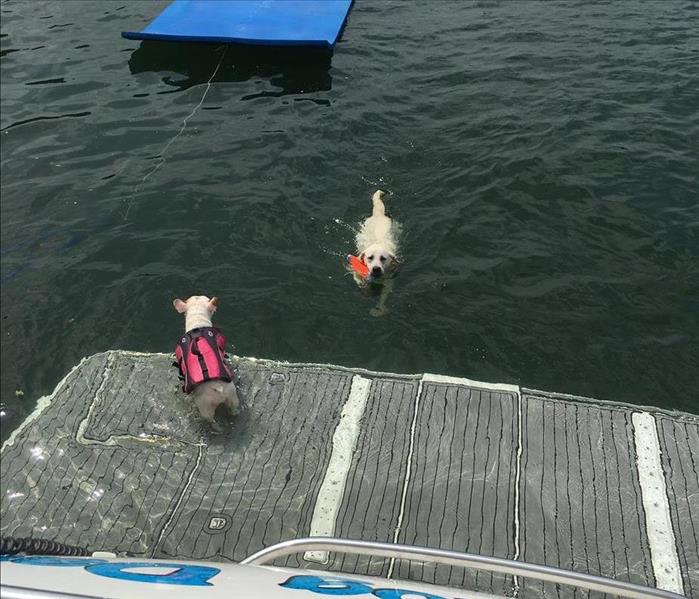 Dixie Enjoying Lake Travis
Dixie Enjoying Lake Travis
Spring rains caused server flooding throughout Austin Texas. SERVPRO of Hyde Park / Central Austin completed dozens of jobs for flood victims. Many areas were impacted by inches of rain fall in very short period of time creating rising water in areas that don't usually flood. The Austin area experienced dozens of road closures due to high waters. SERVPRO had a two automobiles delivered to their shop to dry out and clean. They were flooded due to the rising waters.
But you know the best part about all this flooding? Lake Travis is full again!!! This dog works so hard during the week, as you can see here, without some quality down time she would not make the next week.
Work Hard and Play Hard my friends, but stay safe.
Water Damage - Temporary Power
7/20/2016 (Permalink)
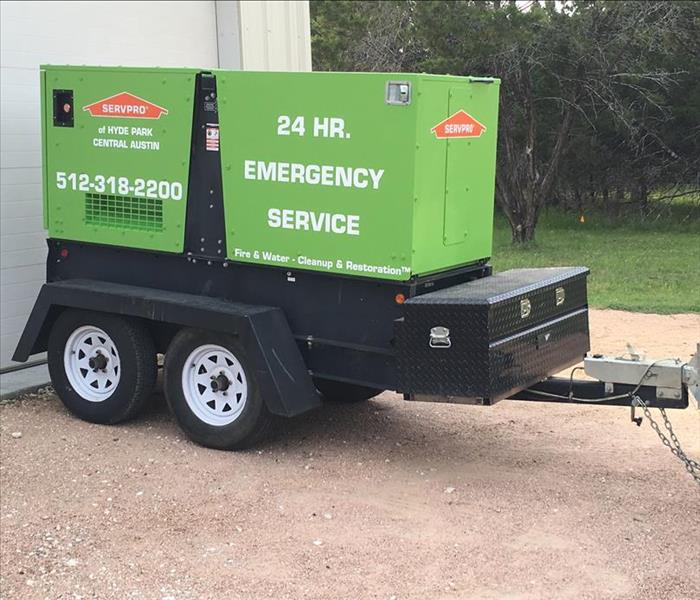 Temporary Power - Fire or Water Damge
Temporary Power - Fire or Water Damge
SERVPRO of Hyde Park / Central Austin is ready for your disaster. Did you know that a plumbing leak could affect enough of your house that it might not be possible to dry everything with the electrical power your house has available.
Seems crazy doesn't it. Not all homes have the same amount of amperage available to run all the equipment needed. Sometimes older homes may have the amperage available but the age of the circuits just won't hold without popping breakers.
For Safety reasons we try to only use 75-80% of the breakers amperage rating. Today's equipment is getting more and more efficient but we still often need more power.
So what is the solution you ask? A trailer mounted generator. That's right, just like the ones you may remember seeing at the country rodeo or fair.
The trailer mounted generator is also a great piece of equipment to have during storm events when all the power is out.
As you can imagine this is not a piece of equipment we use every week or month but we feel it was a wise investment. We are always striving to be prepared to better serve our customers. Faster to Any Disaster.
Do You Know if Your House has Lead Based Paint
3/7/2016 (Permalink)
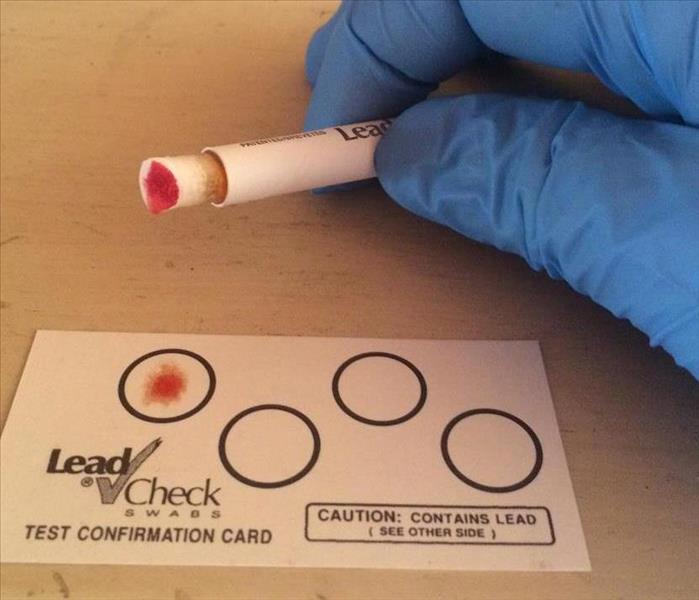 Lead Check from a Water Job
Lead Check from a Water Job
In 2010 federal law started requiring all contractors performing renovation, repair and painting projects to test for lest based a paint for construction prior to 1978. You will need an EPA RRP Certified firm who will be using EPA Certified Renovators.
SERVPRO of Hyde Park / Central Austin is an EPA RRP Certified Firm and has a team of certified renovators who can handling all our Lead Testing and Renovation needs in Austin, TX and the surrounding areas. Water Damage, Fire Demo, Mold Remediation are just some of the areas we often find it necessary to test for Lead prior to starting the work. The EPA Website has lots of info for you to research. The EPA also has a brochure called The Lead Safe Certified Guide to Renovate Right that will most likely answer all our renovation question.
Local Restoration Company's Office Floods
1/21/2016 (Permalink)
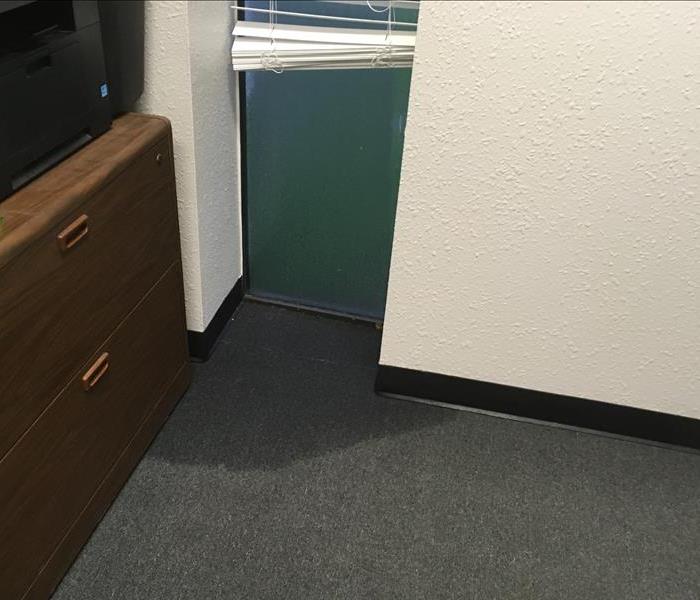 The corner of my office has Water Damage
The corner of my office has Water Damage
Even SERVPRO of Hyde Park / Central Austin is not exempt from water damage. Heavy rains compounded with a landscaping issue caused water to back up into my office.
This is a pretty common occurrence among office buildings. Usually someone sets a fan on the carpet and it will be dry by quitting time, right. That's how the mold issues can get started. I didn't say that would cause mold from this single event.
If all you do is dry the carpet it is highly probable that you are leaving wet materials unattended too. The drywall is most likely wet behind the cove base and maybe some materials like wall studs and base plate, depending on the construction type.
Leaving the cove base on makes for slower drying due to the cove base covering up the wet materials.
Try to imagine how many times these same materials might have gotten wet from prior rains. Not the carpet too, just enough rain for the water to seep into the walls but not getting the carpet wet.
A continuation of the wetting and rewetting of a wall over a duration of years from an exterior leak can lead to a mold inside the walls.
Don't let a common Water Damage turn into a Mold Remediation project.
To see some of our job before and after photos Click Here
 Flooding can happen in a flash. Call SERVPRO of Hyde Park/Central Austin to help clear any damage your home or business gets during a flood.
Flooding can happen in a flash. Call SERVPRO of Hyde Park/Central Austin to help clear any damage your home or business gets during a flood.

 24/7 Emergency Service
24/7 Emergency Service



































